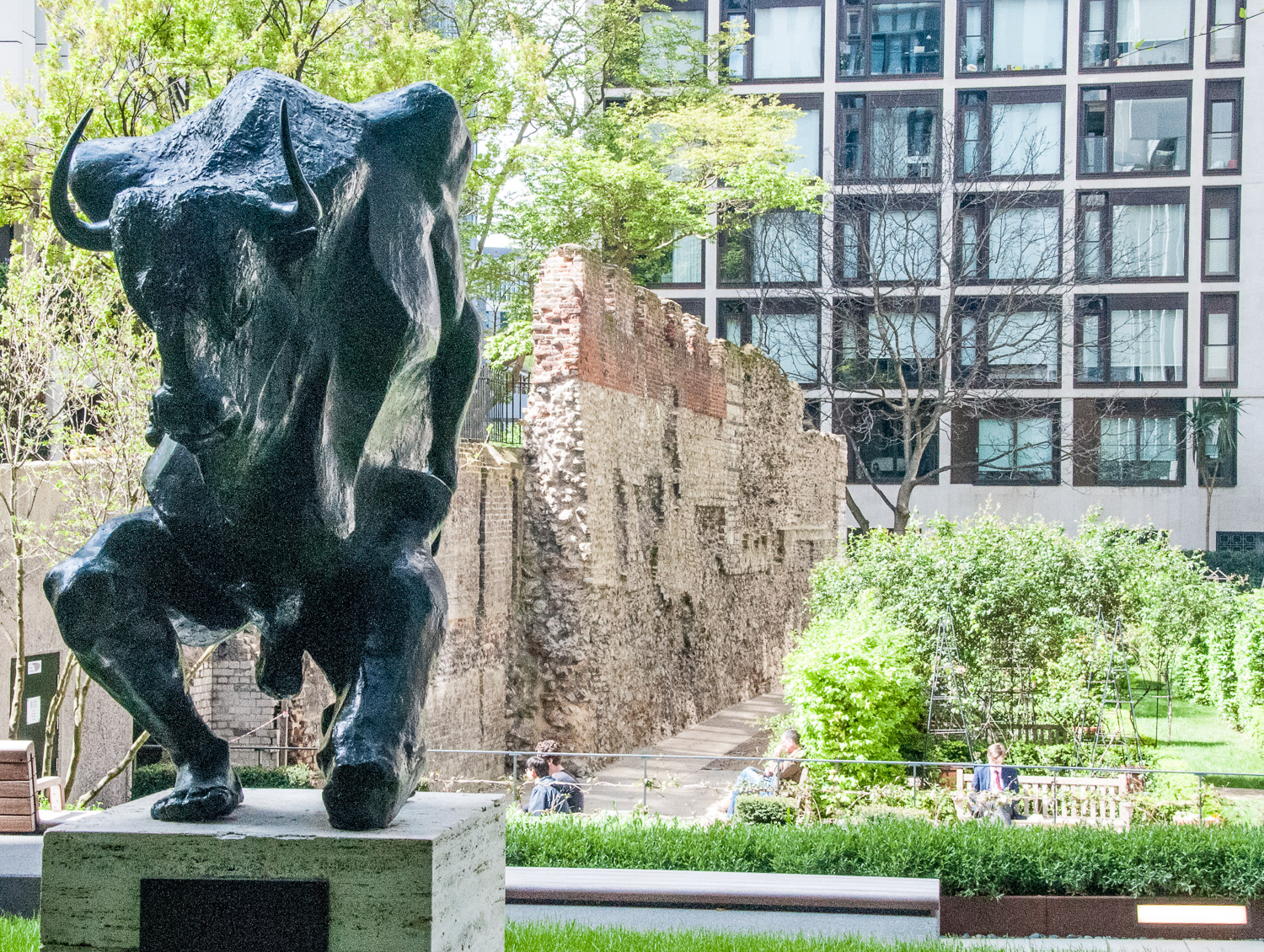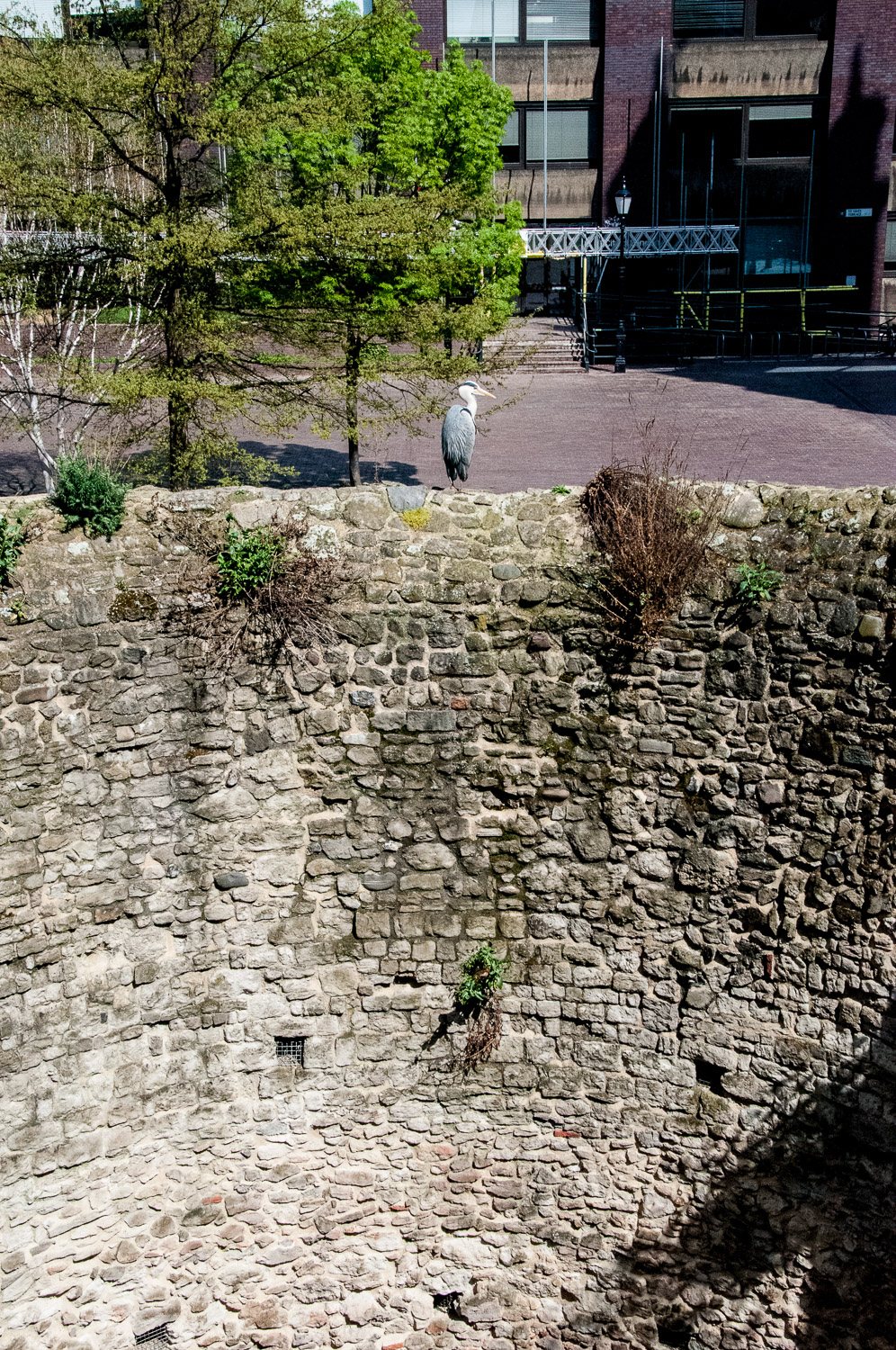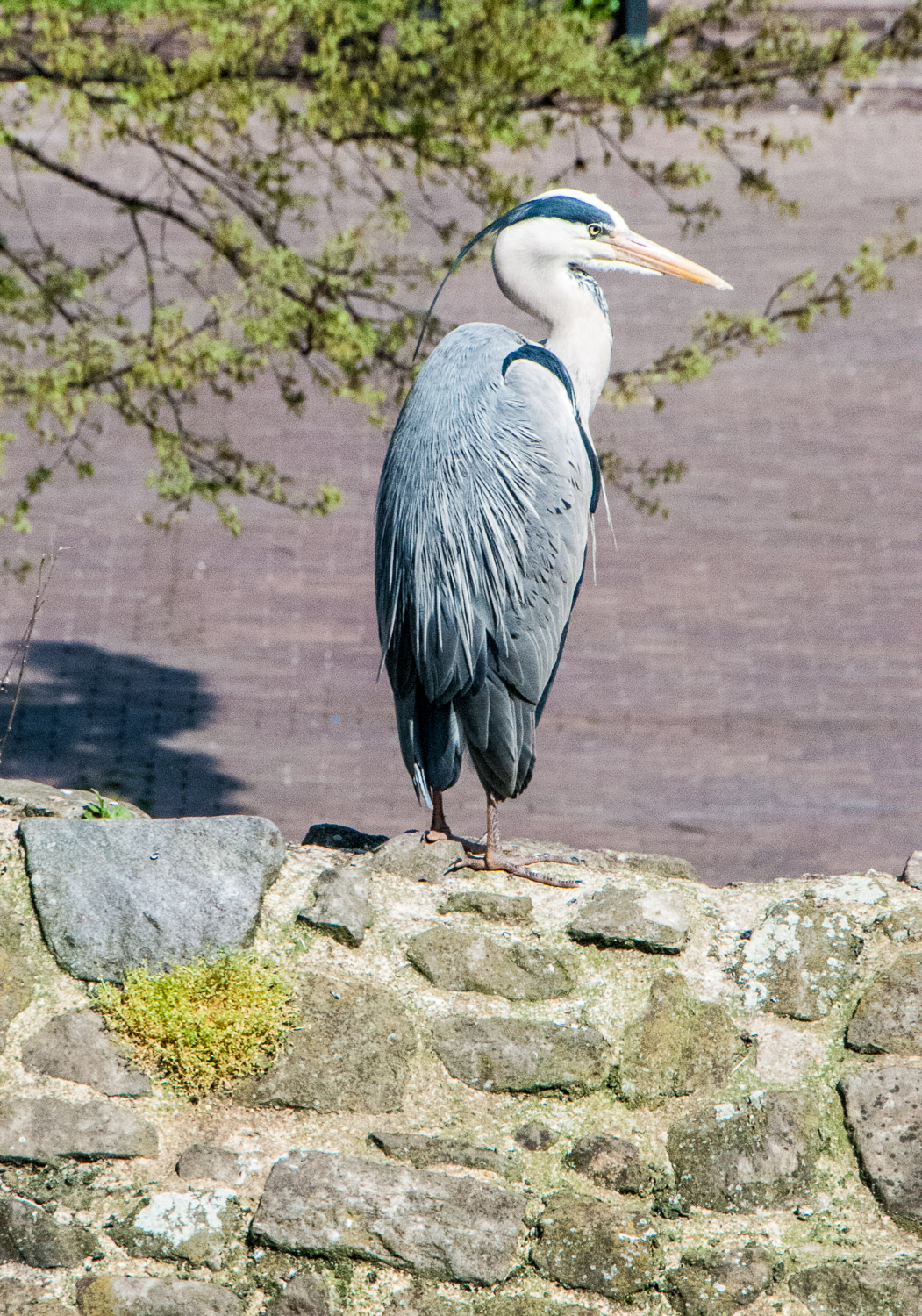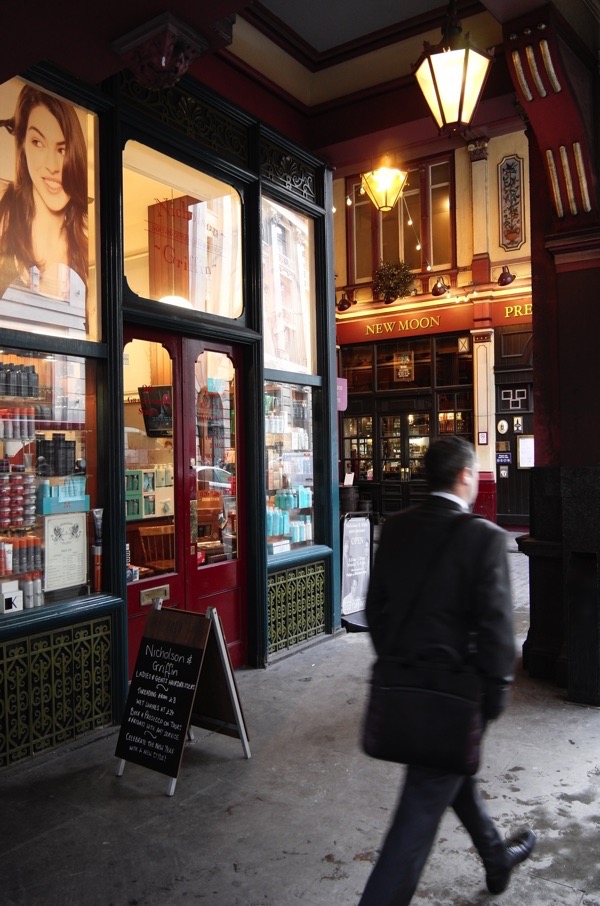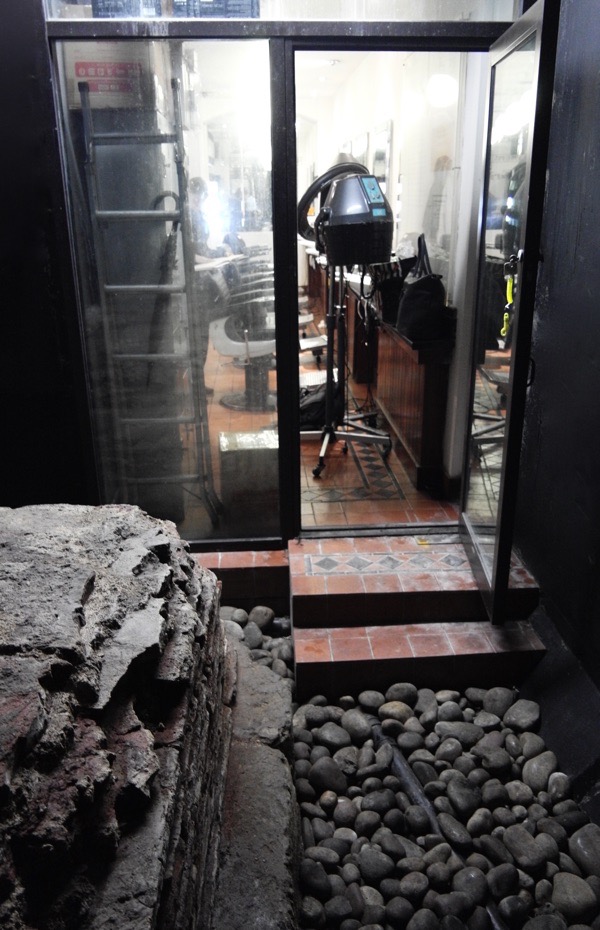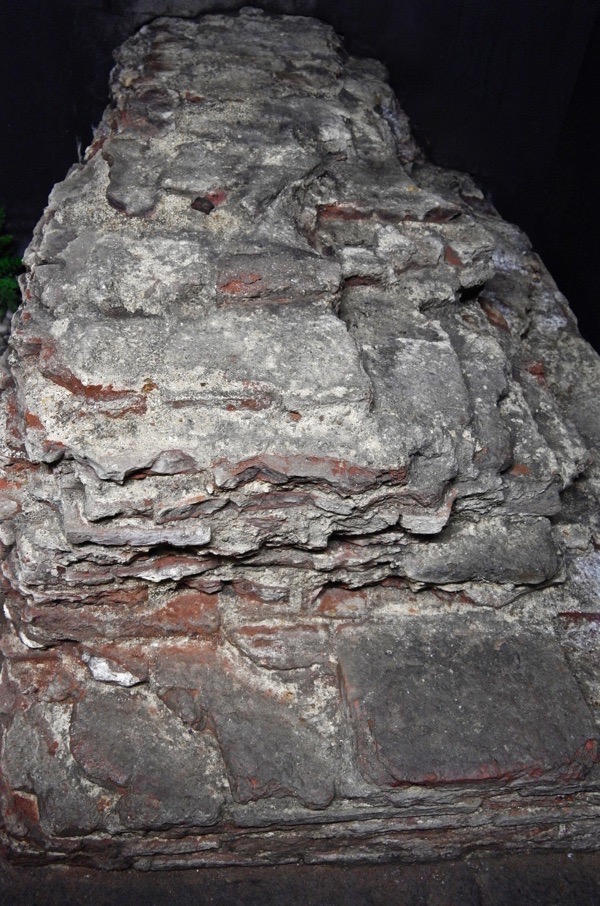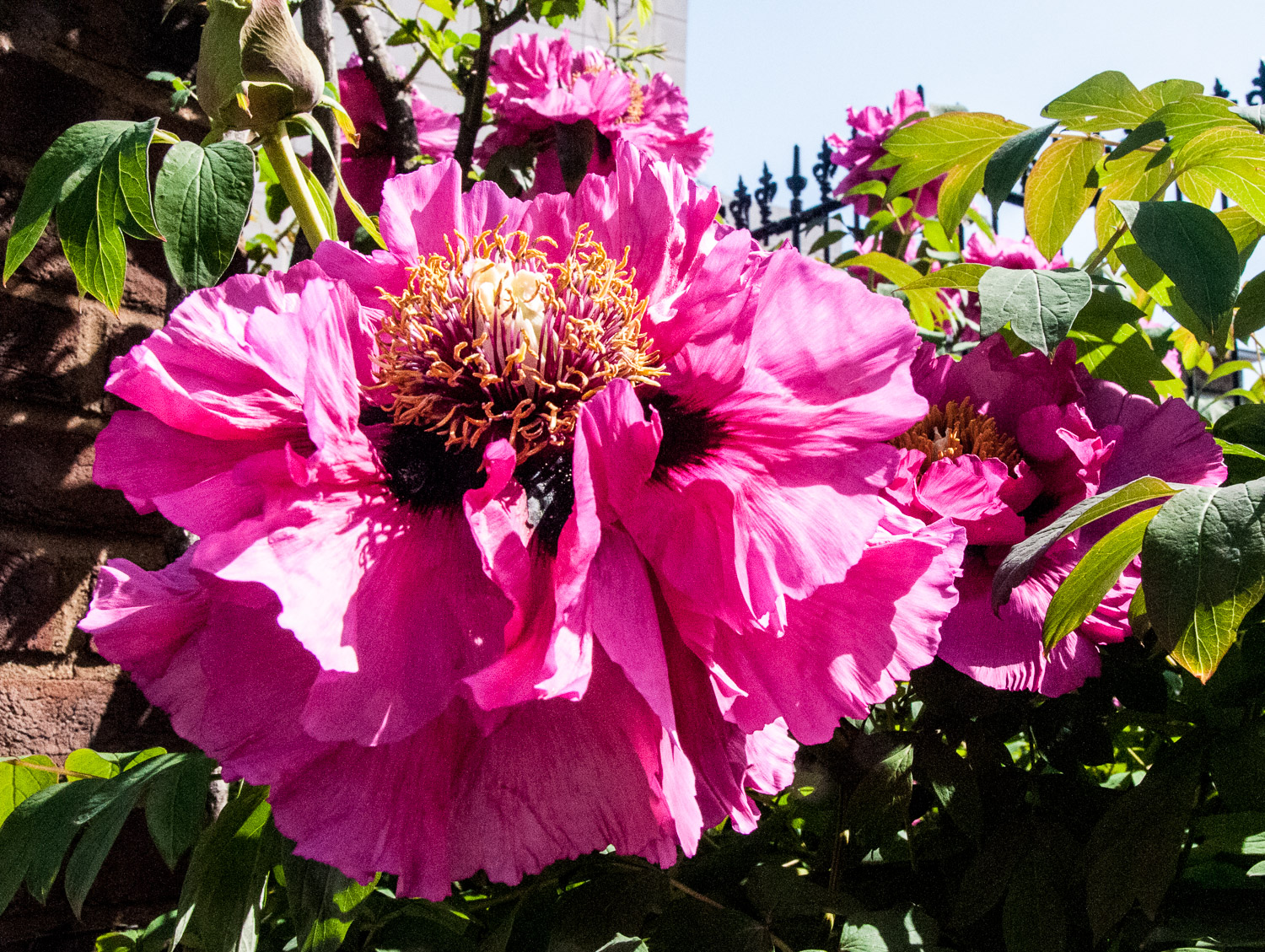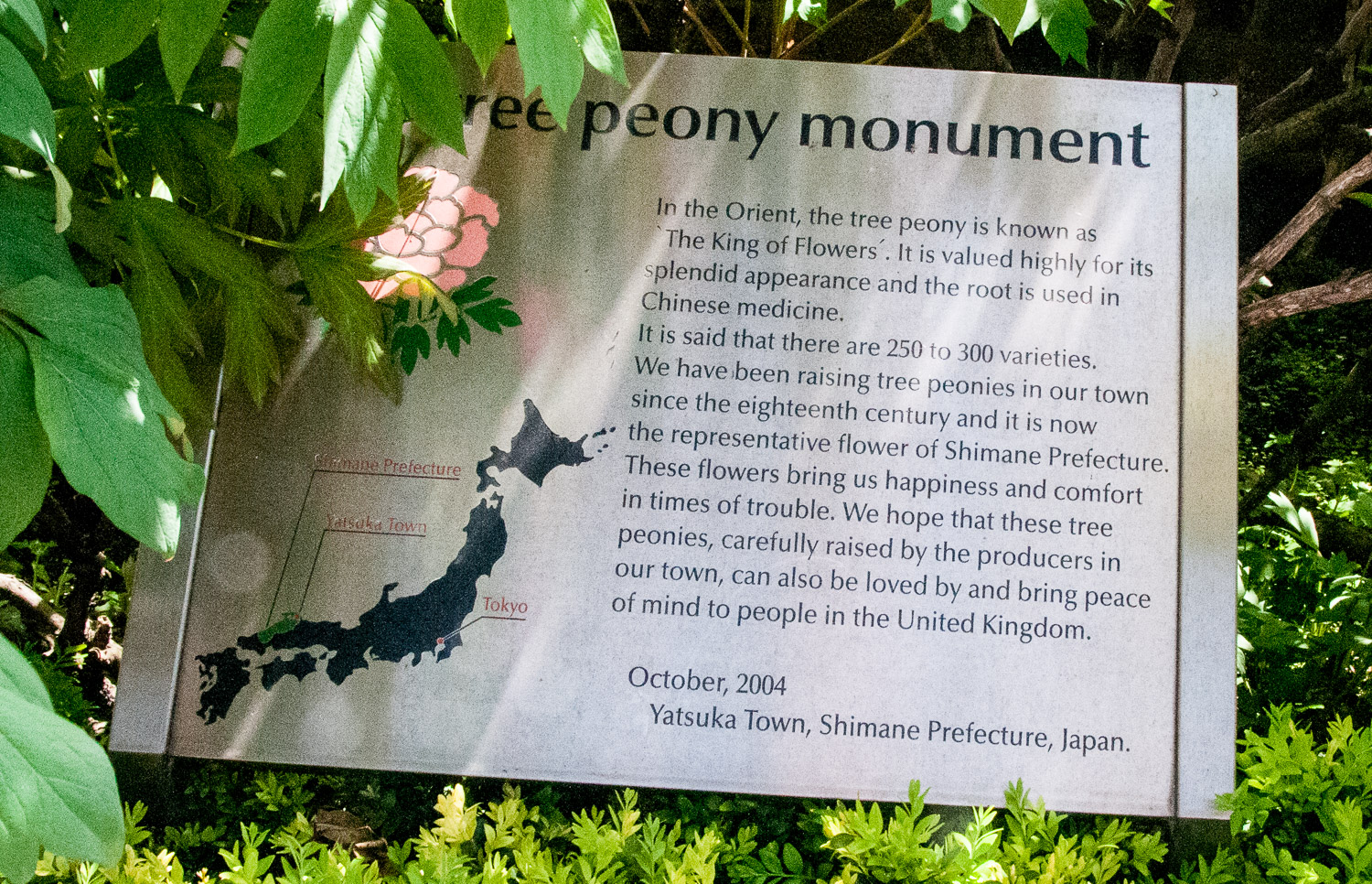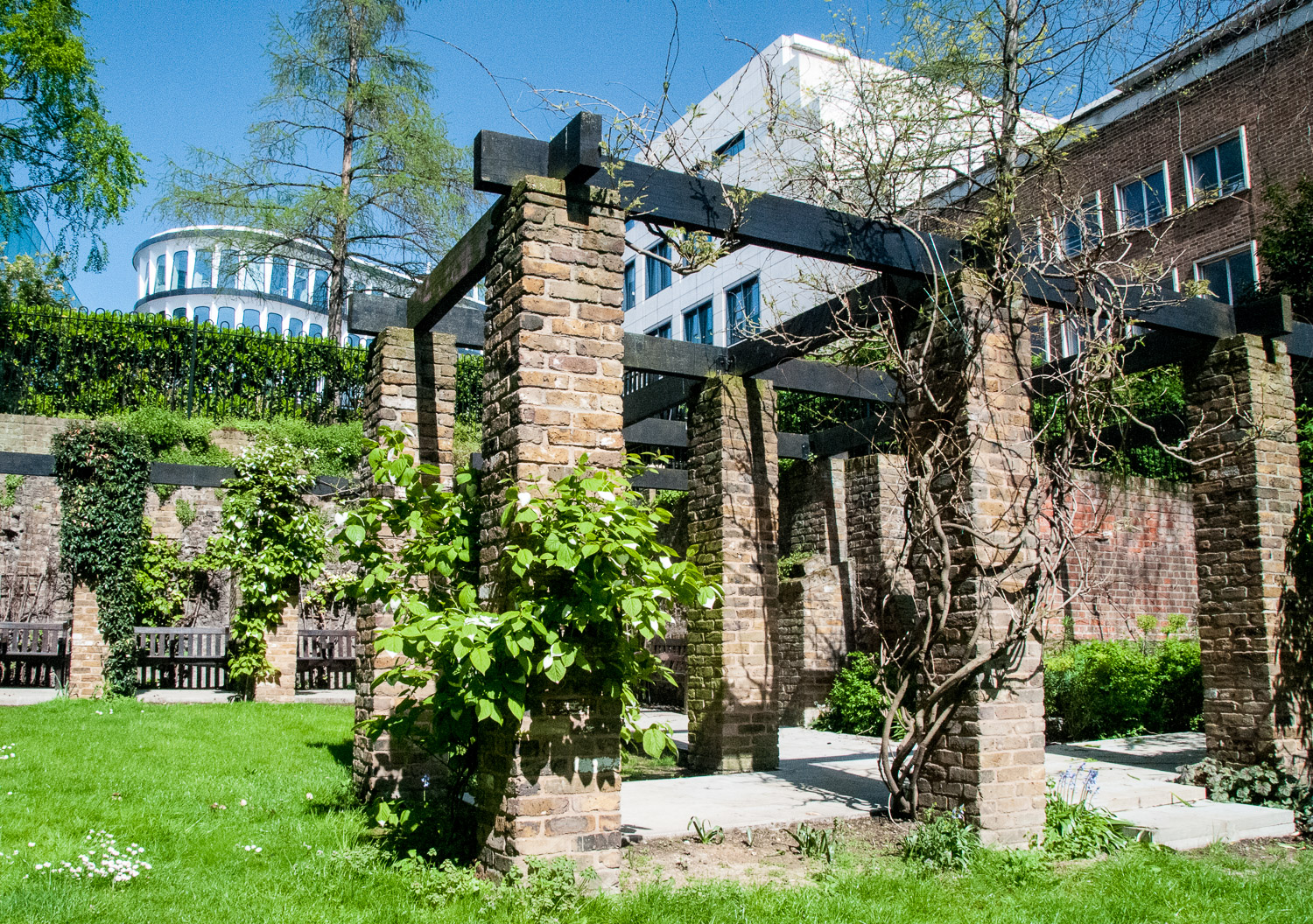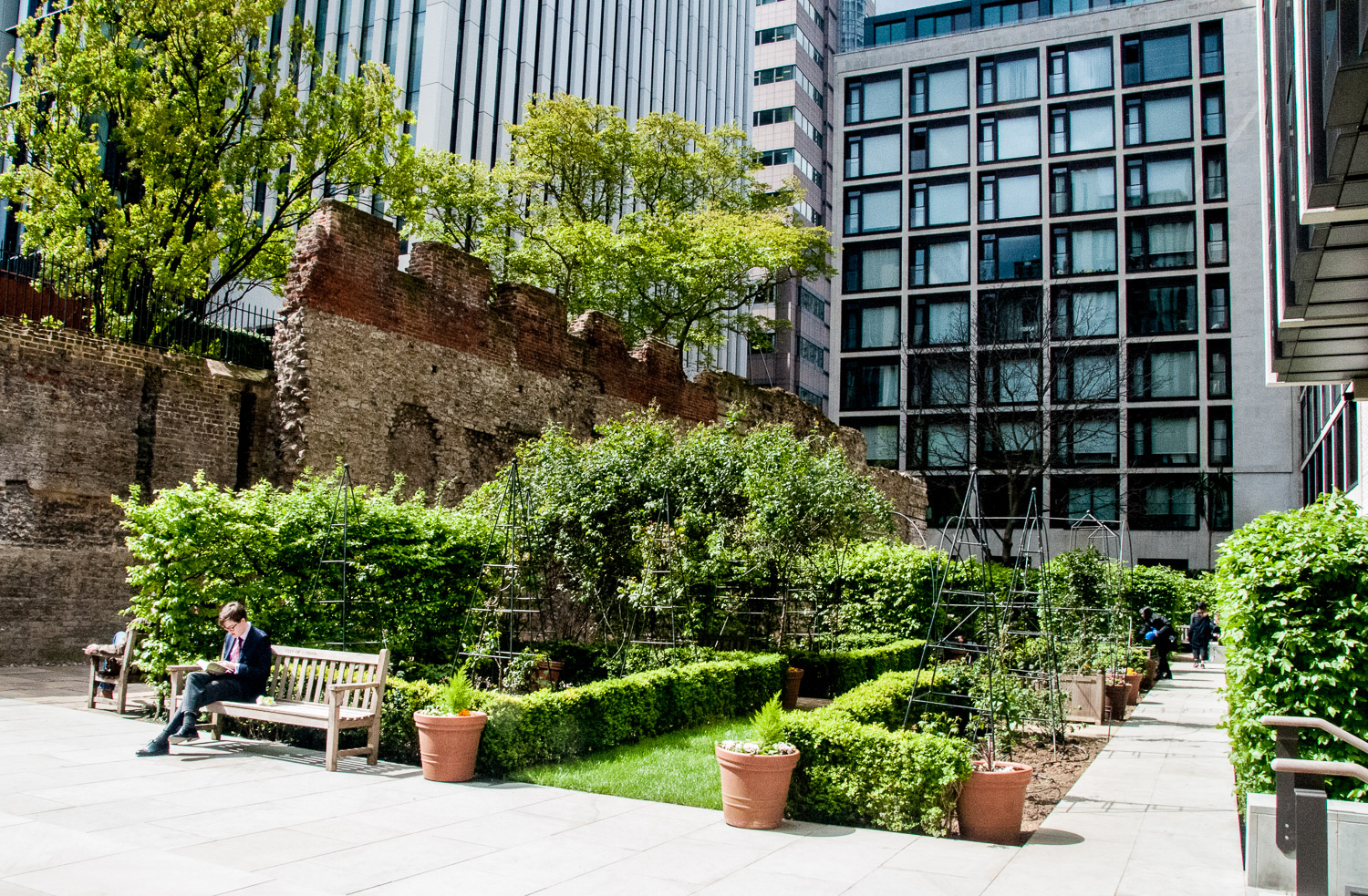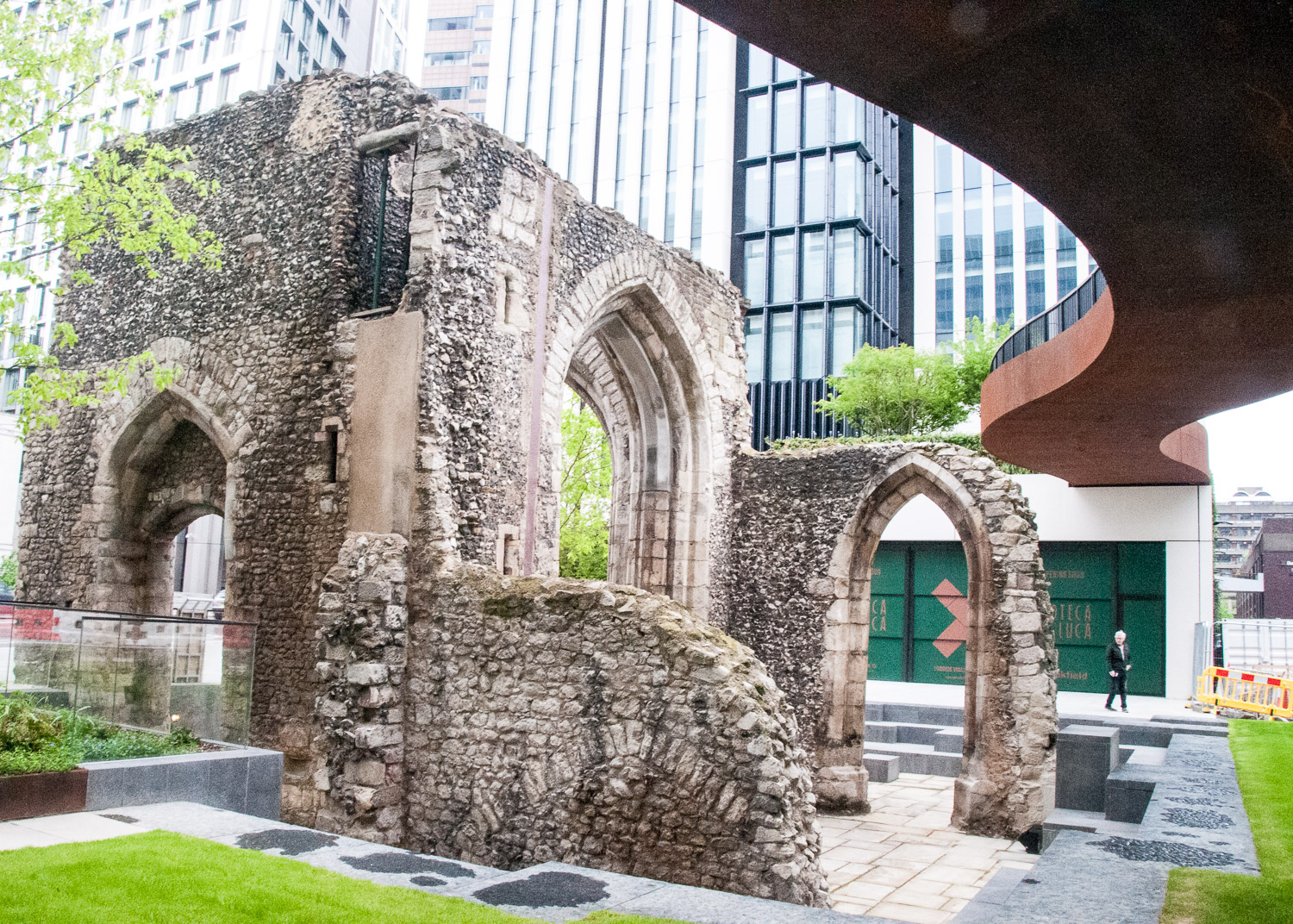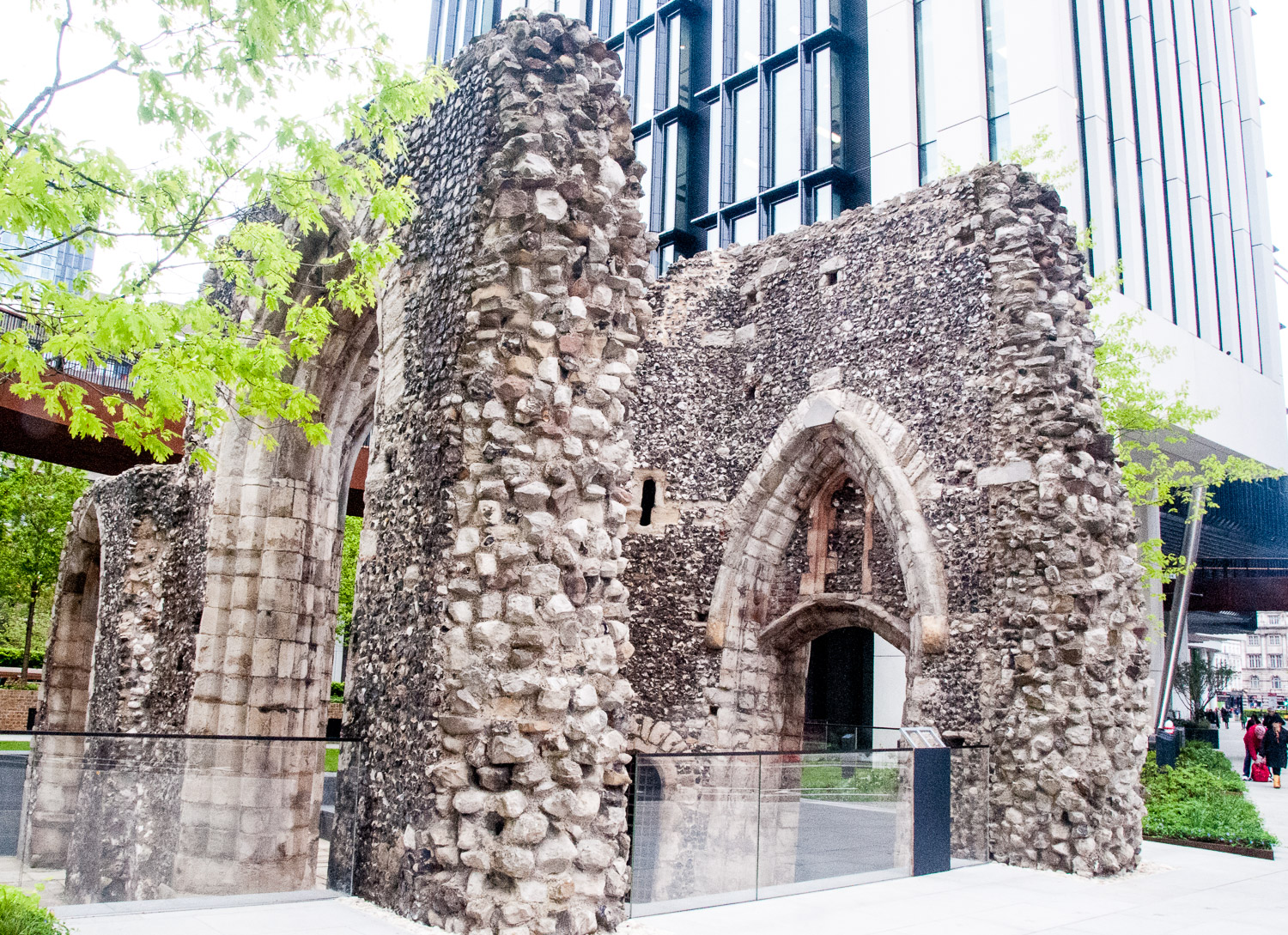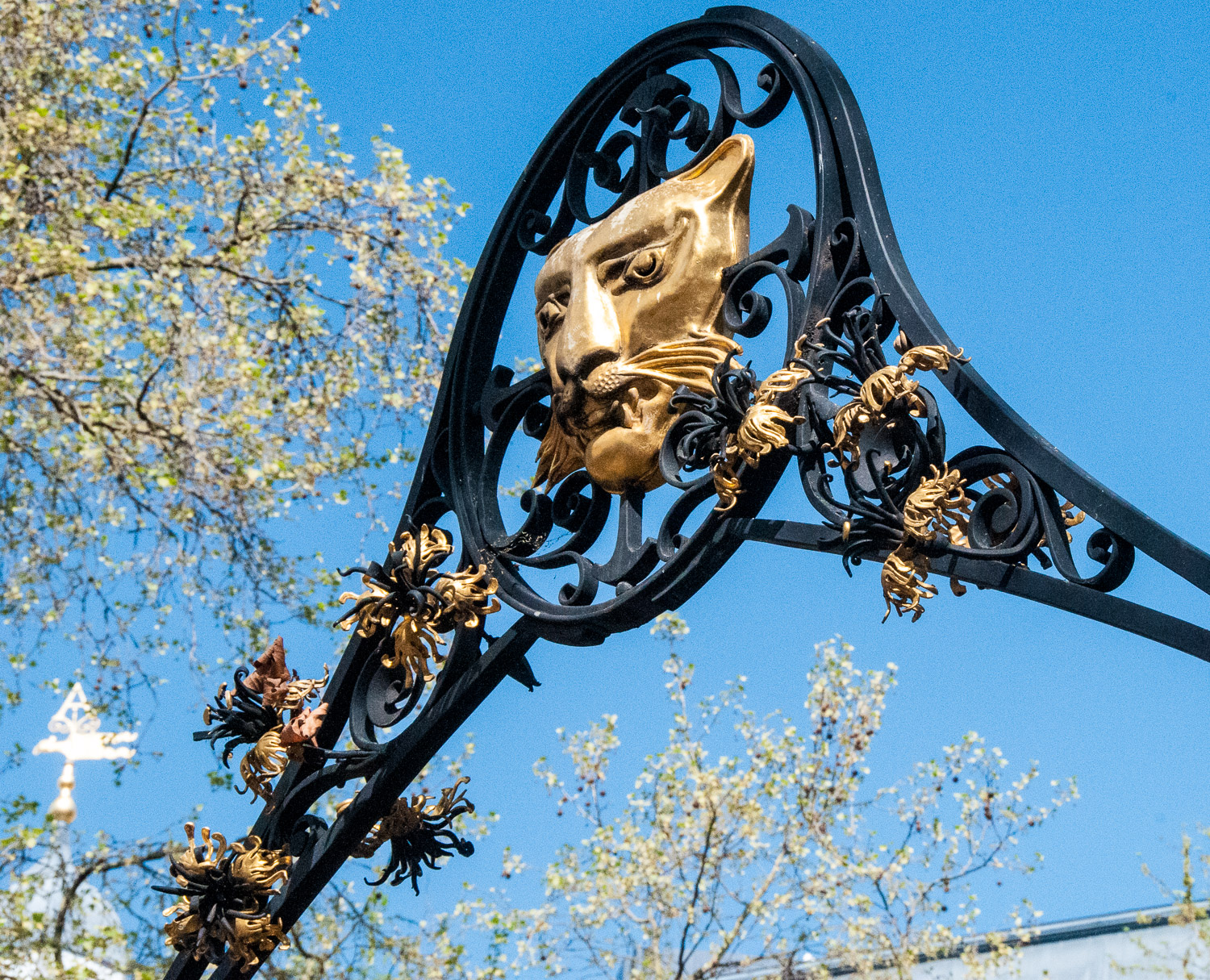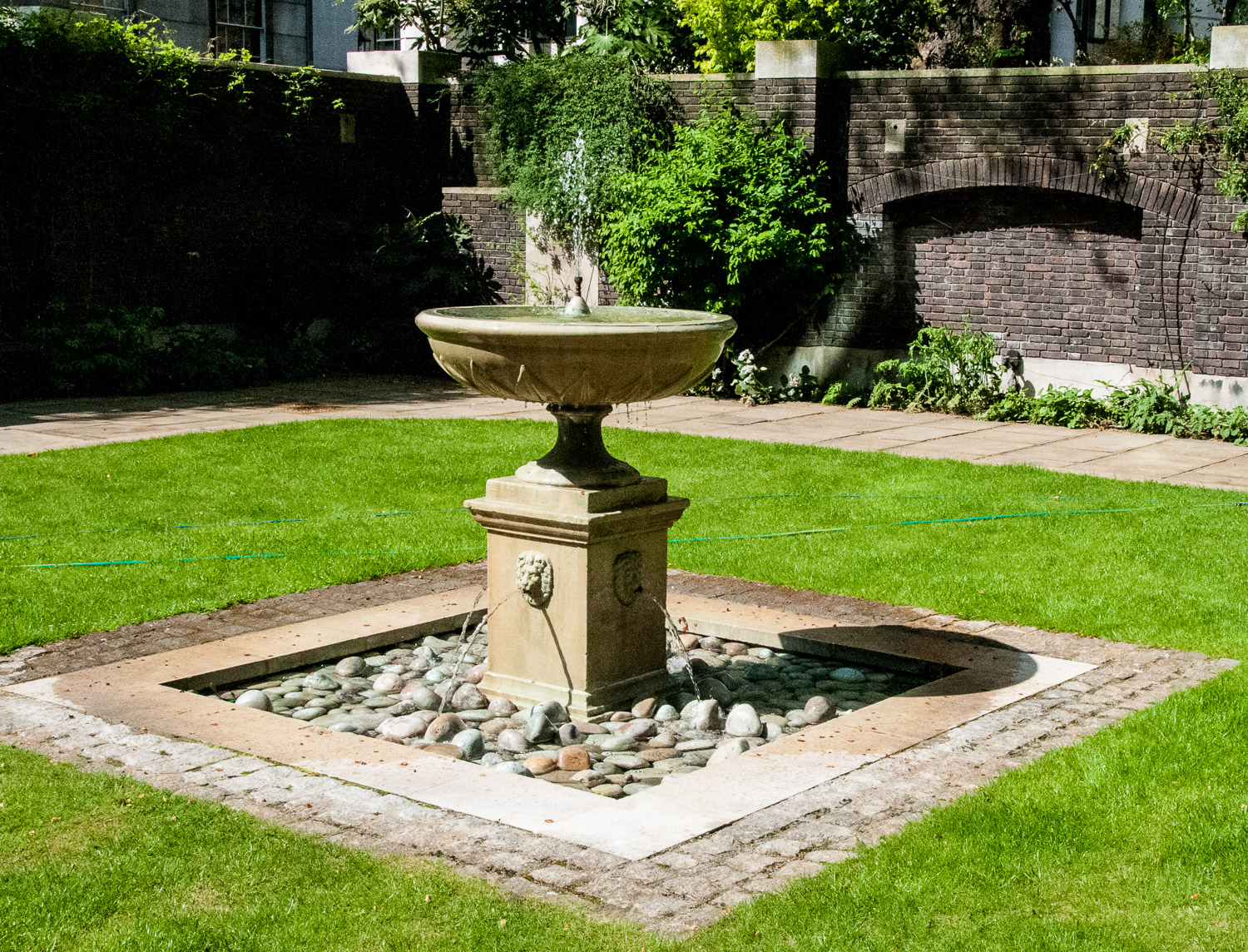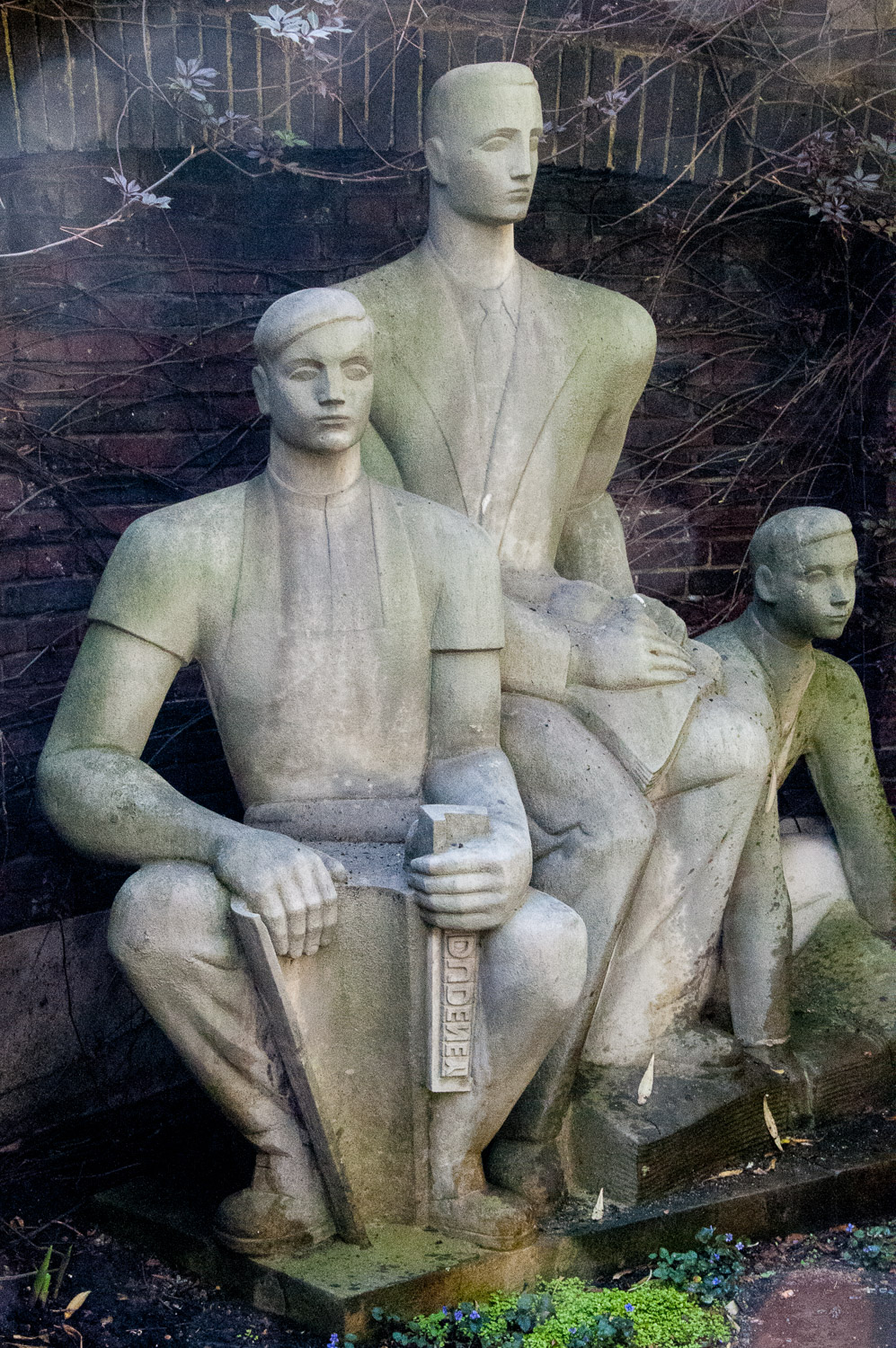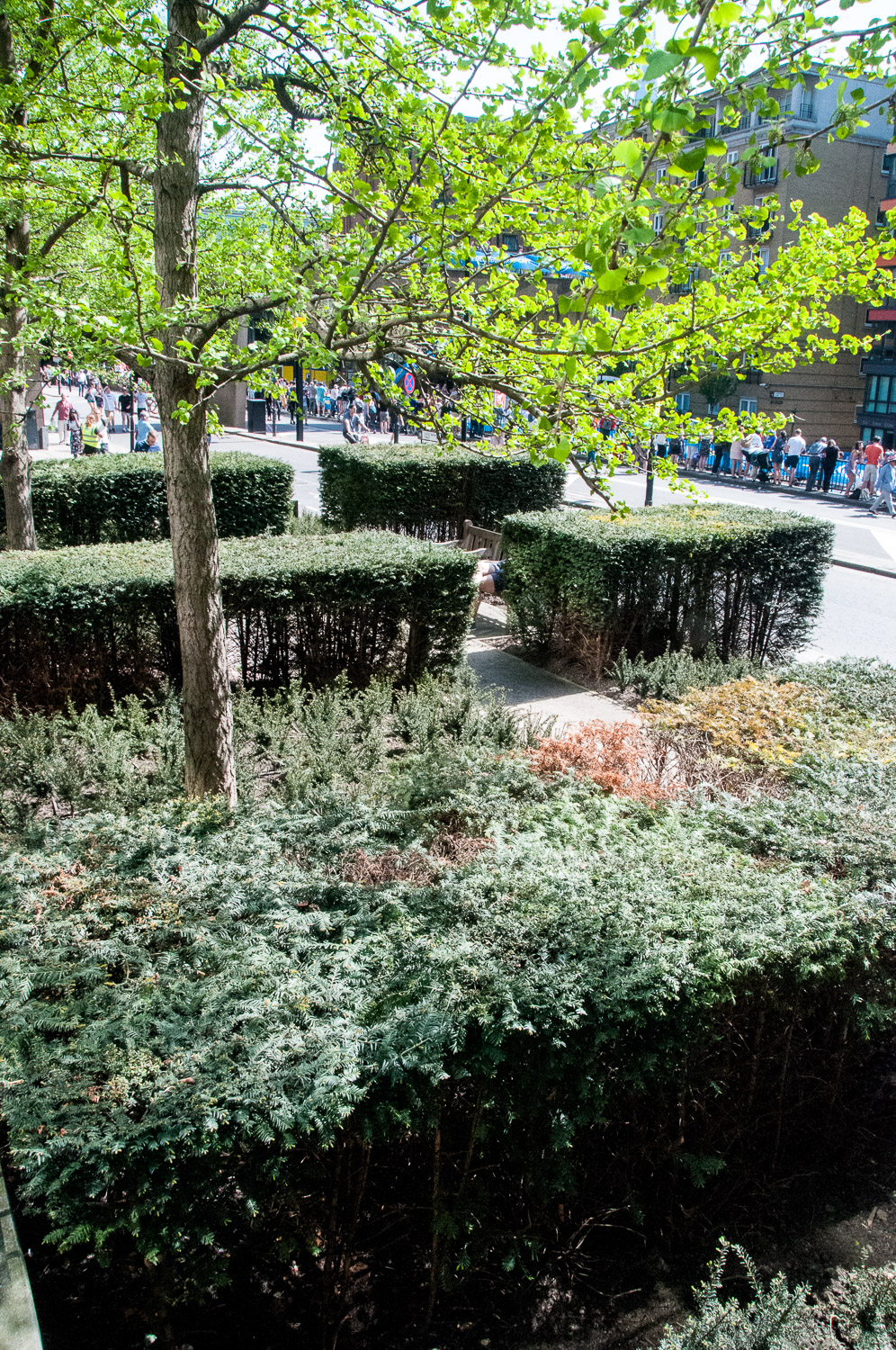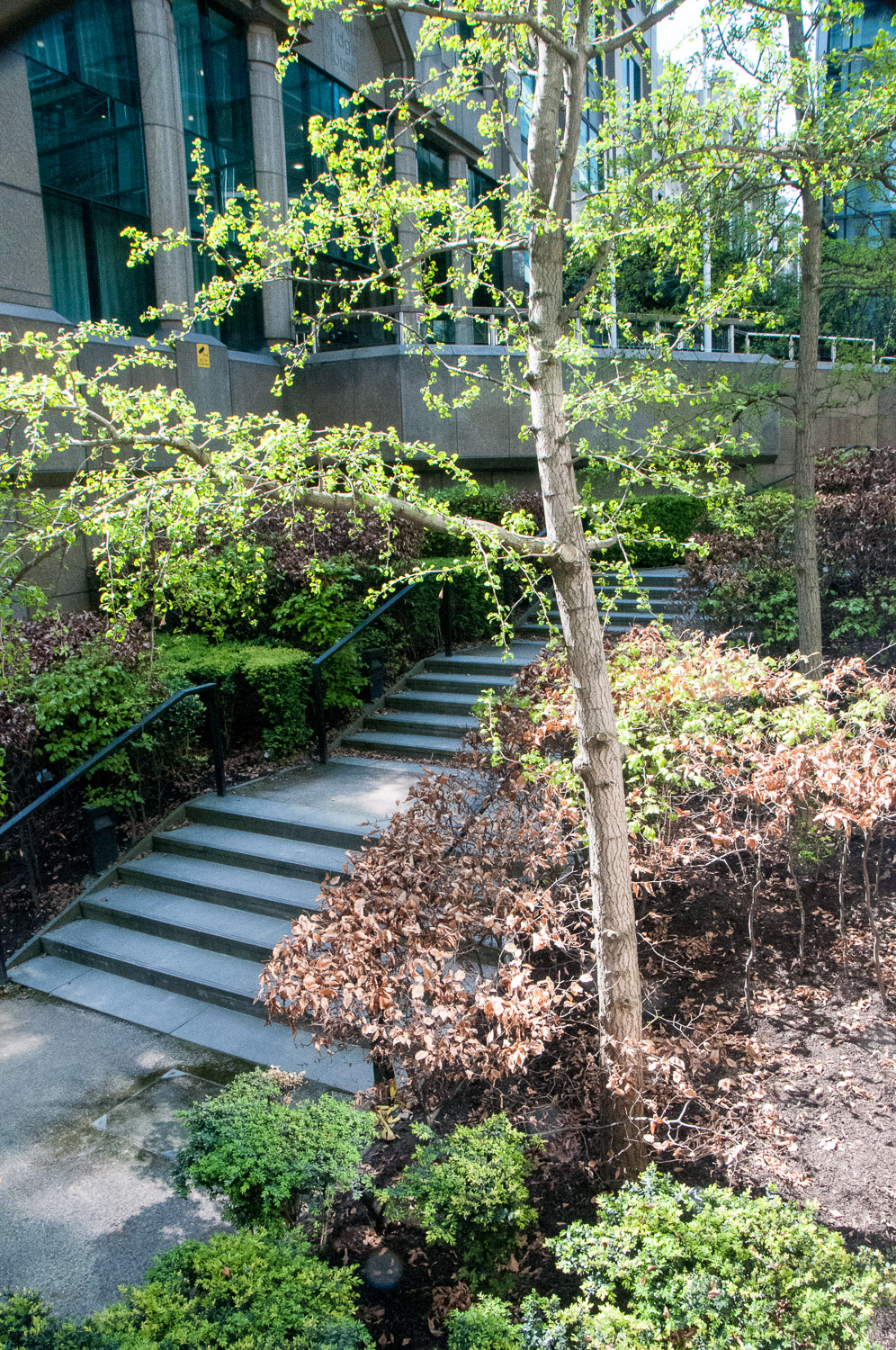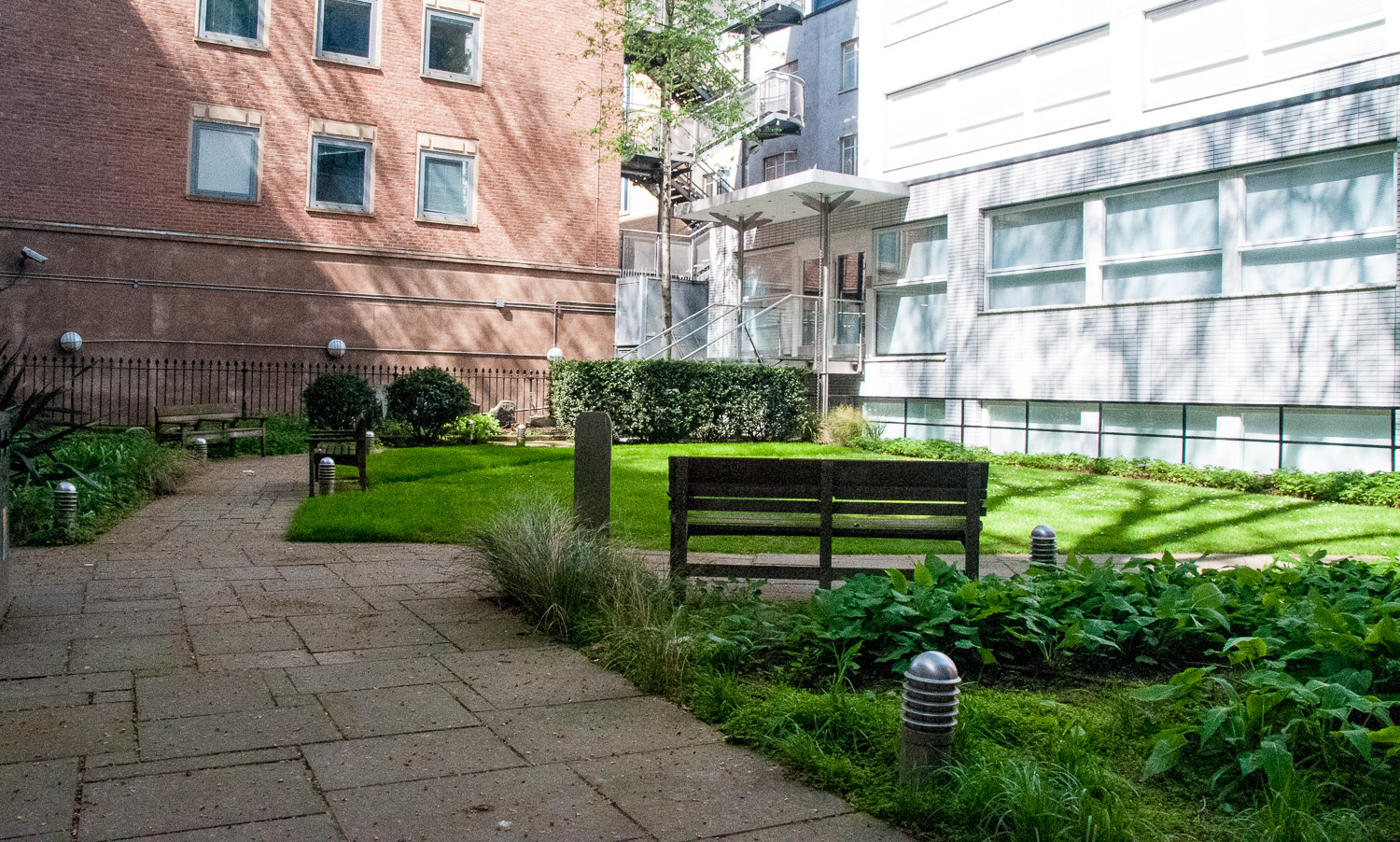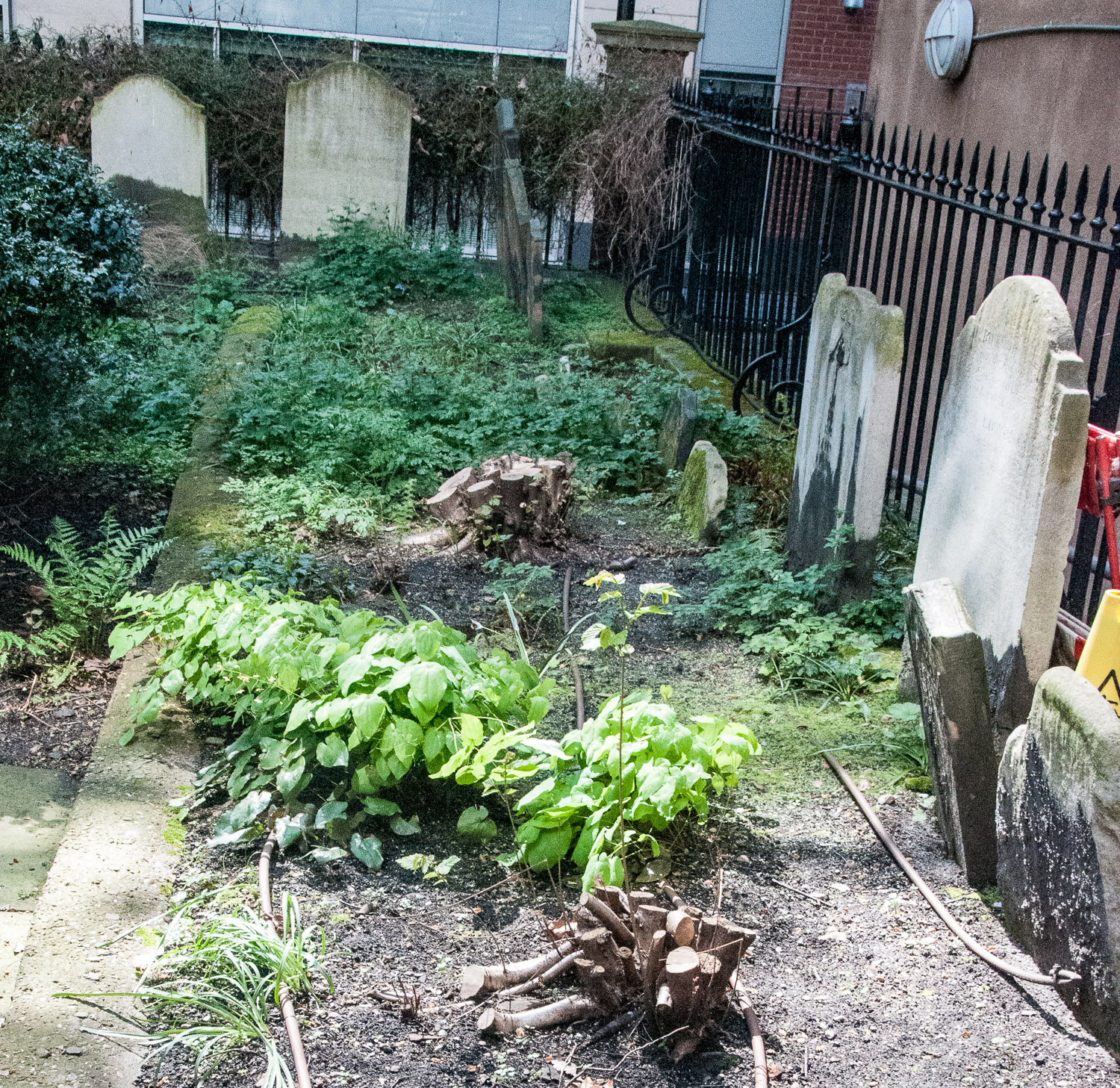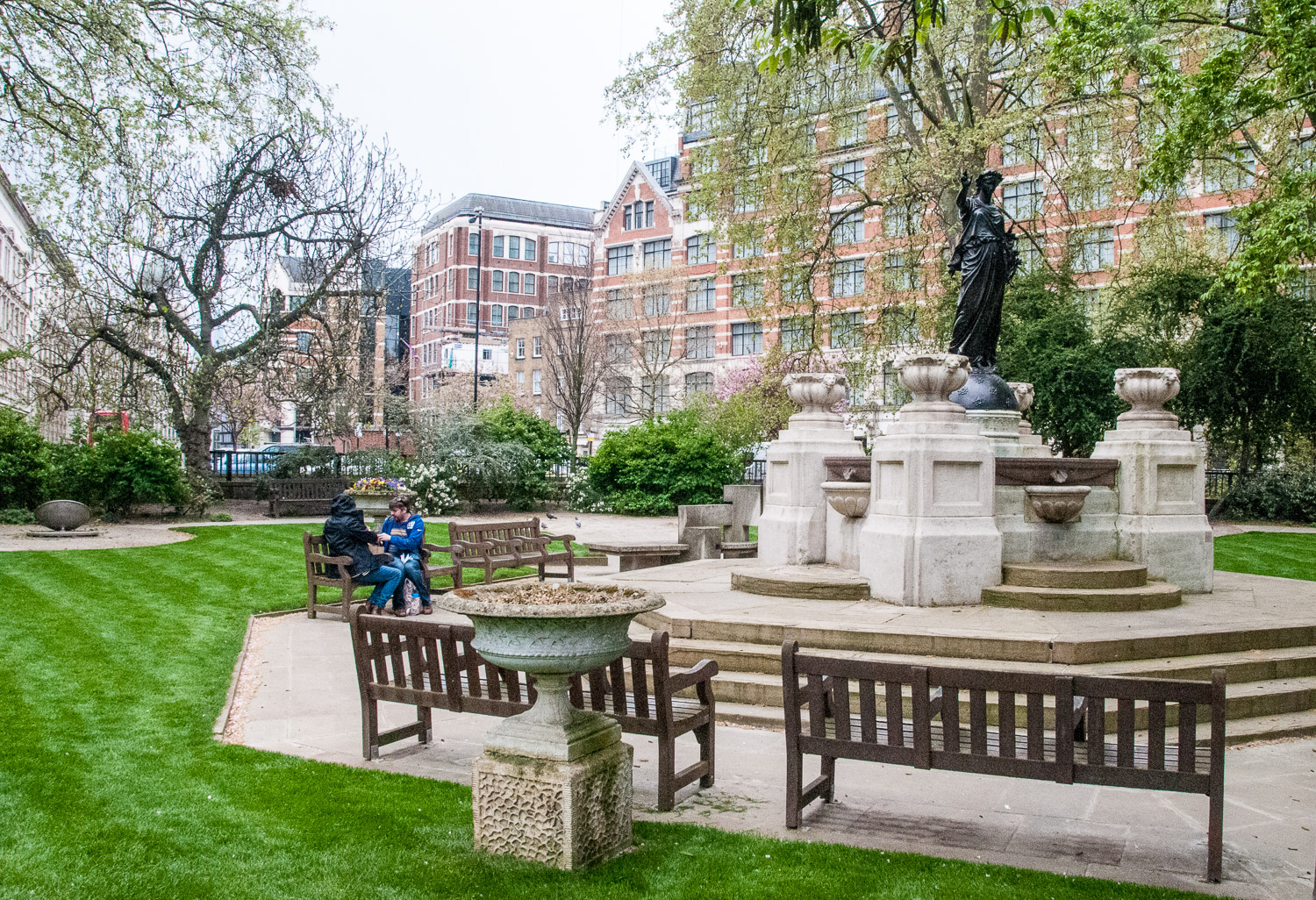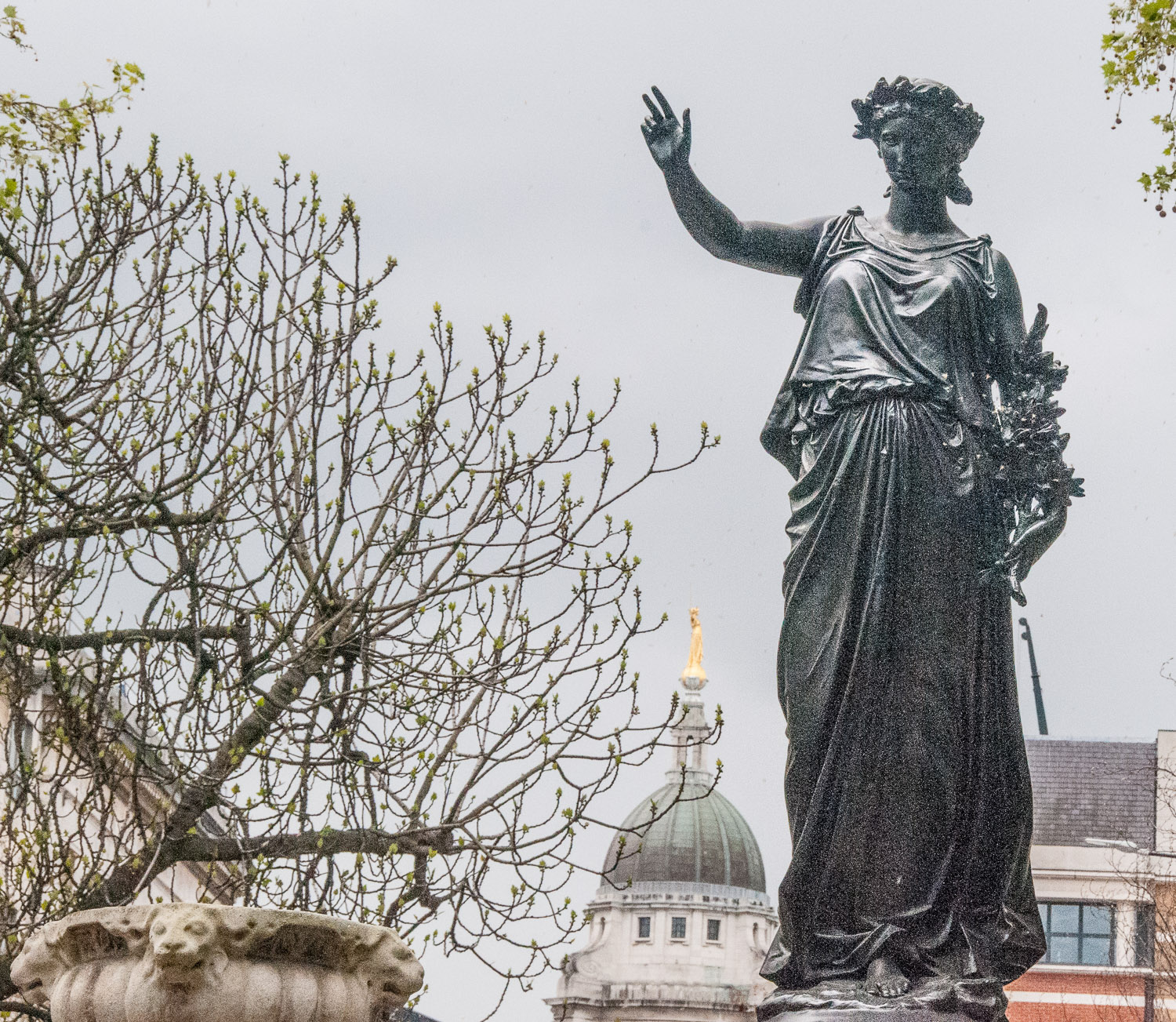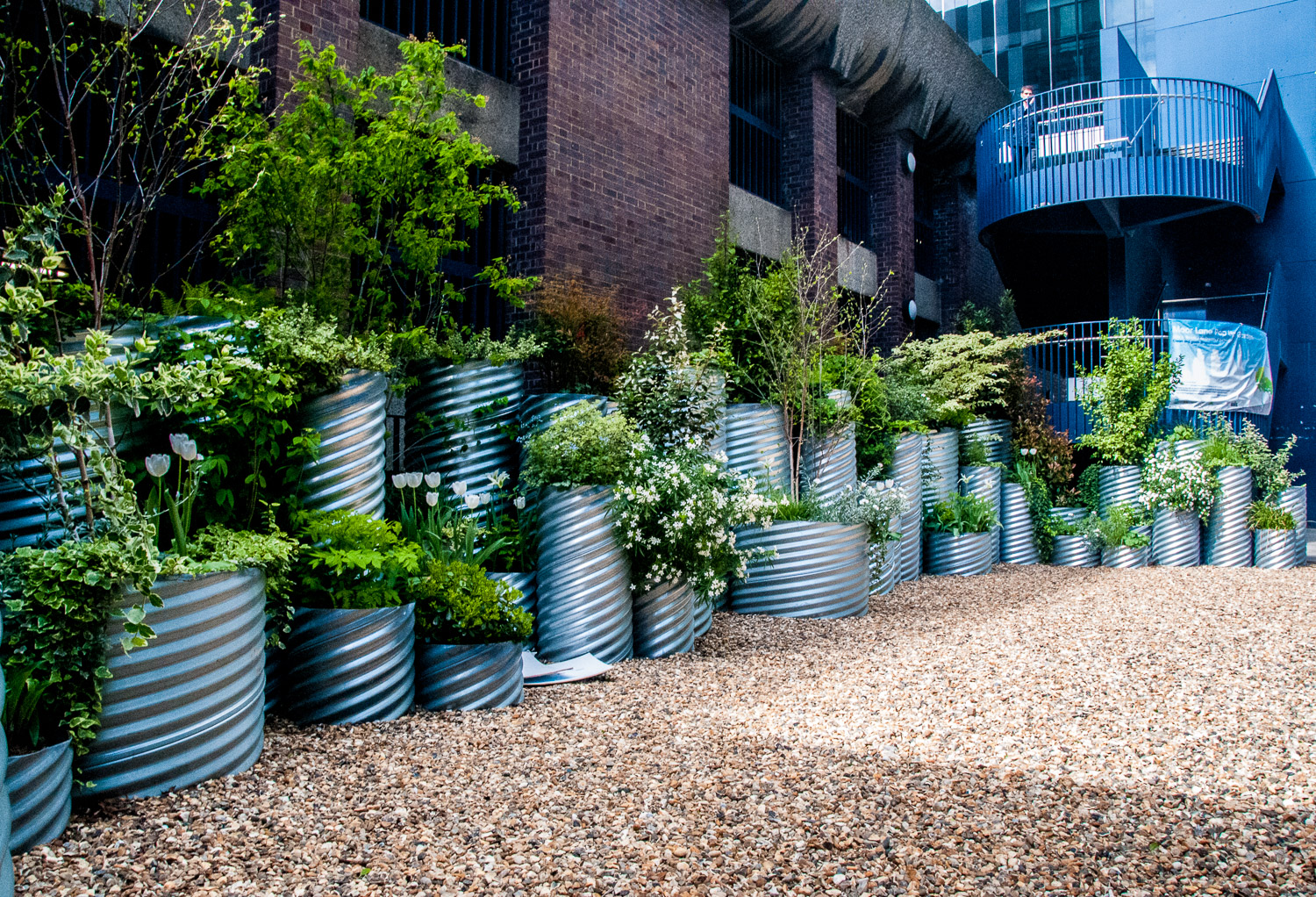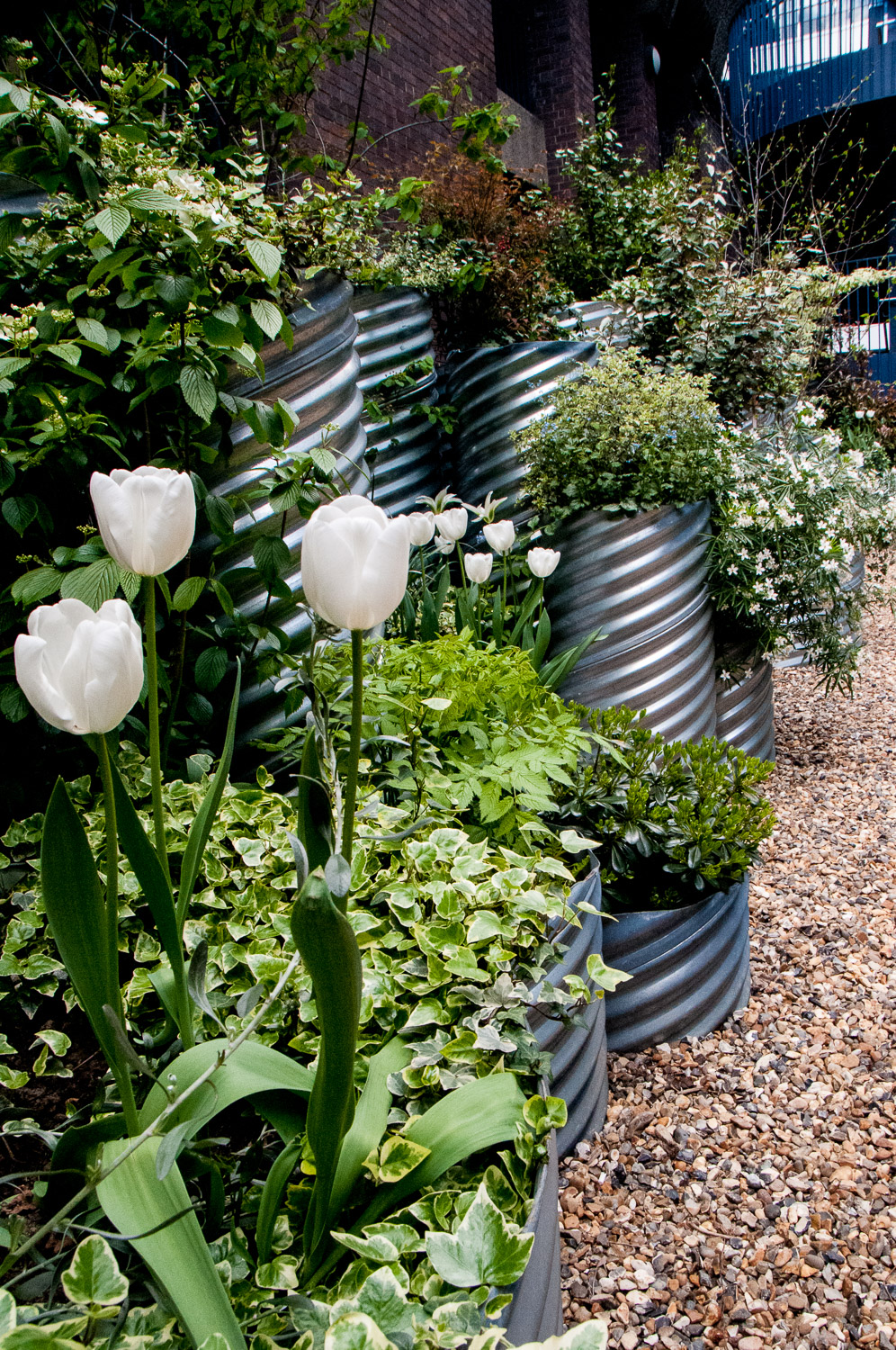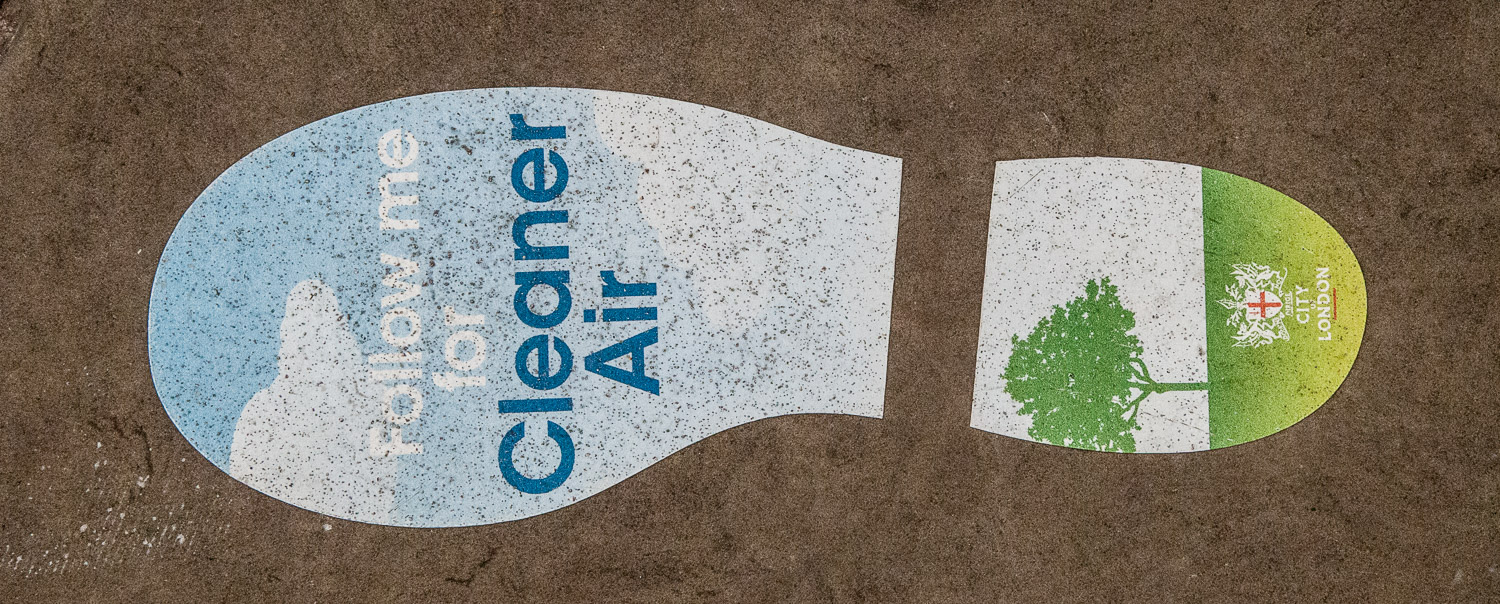I am sure there are very few dishonest solicitors nowadays, but there seems to have been a time when an honest one was rather unusual, and this virtue was so exceptional that his clients paid for a memorial plaque saying so. It reads ‘Hobson Judkin, late of Clifford’s Inn, THE HONEST SOLICITOR who departed this life June 30th 1812’.
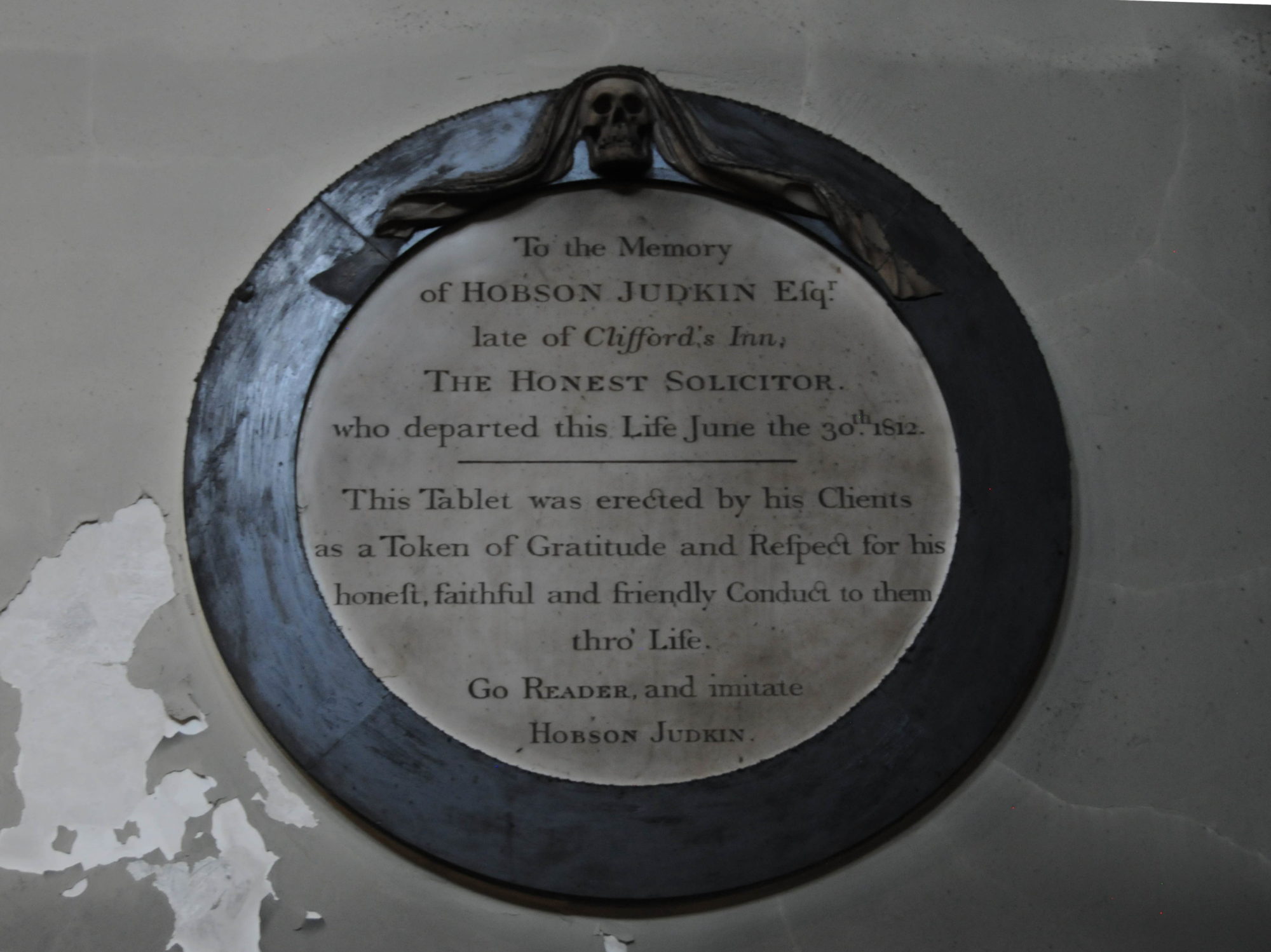
The plaque can be seen in St Dunstan-in-the West on Fleet Street.
‘Go reader’ we are told ‘and imitate Hobson Judkin’.
Also in the church is this figure of a young man, apparently asleep …
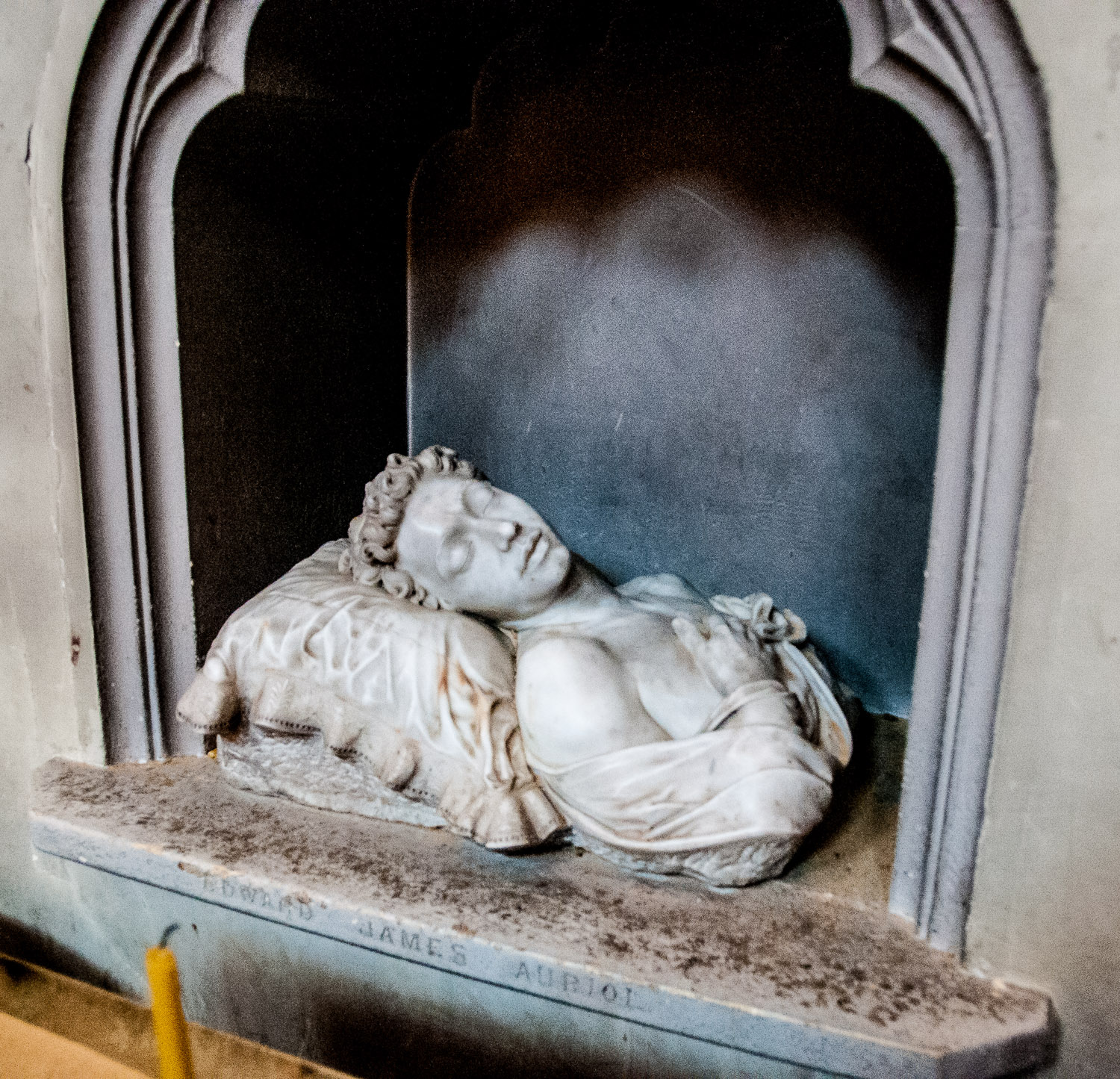
In fact, Edward James Auriol died tragically at the age of 17 when he drowned whilst swimming in the Rhône river in Geneva one bright morning on 19th August 1847. A student at Kings College London, he was the ‘tenderly beloved and only child’ of the Rector of St Dunstan’s Edward Auriol and his wife Georgiana.
St Bride’s Fleet Street was badly damaged in the War but has now been sympathetically restored. In it there is a memorial to a lady who has a special connection with the United States…
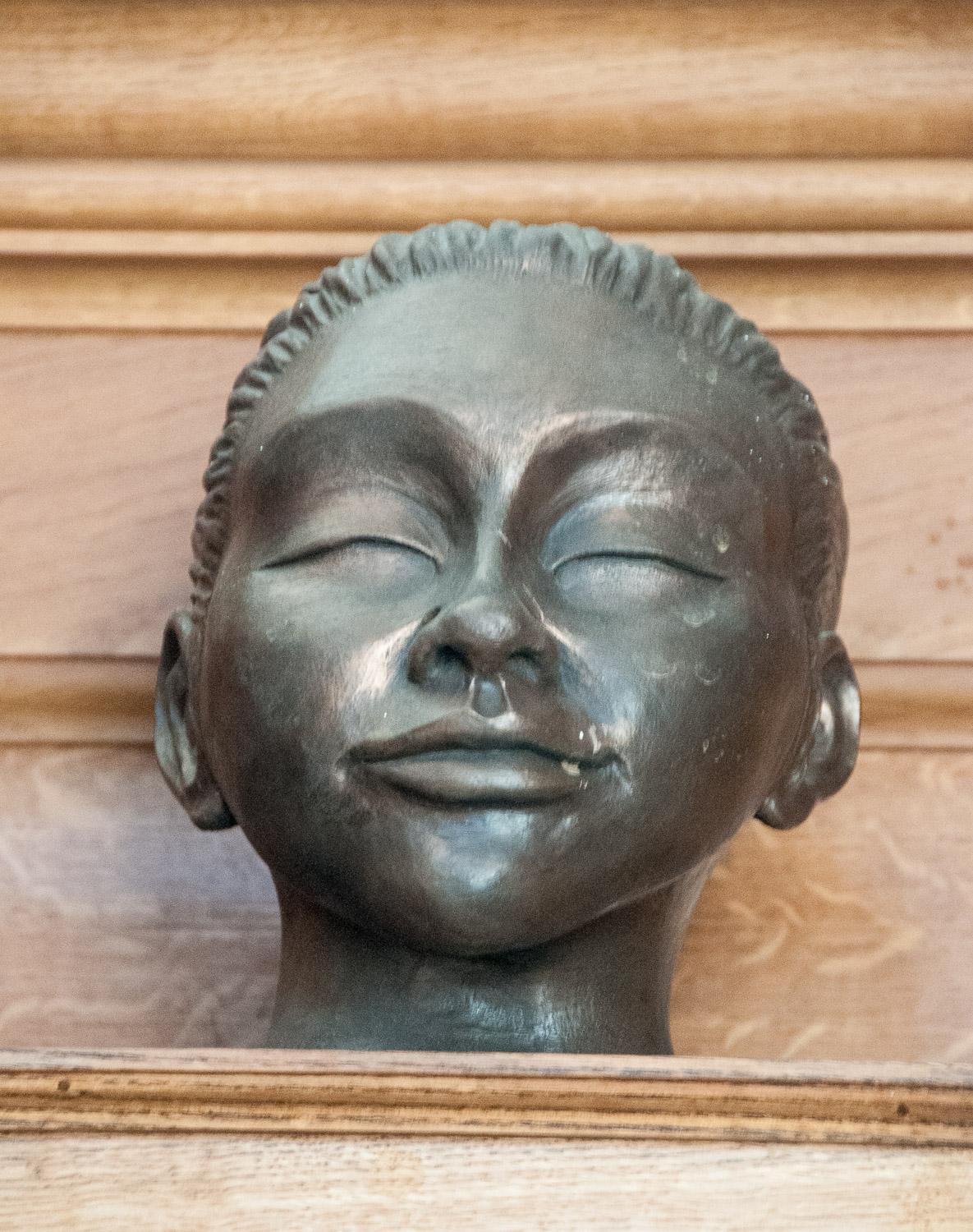
Virginia Dare by Clare Waterhouse (1999).
At some time in the early 1580s the wedding took place at St Bride’s between Eleanor White and the tiler and bricklayer Ananias Dare. Their daughter Virginia was to be the first English child born in North America on Roanoake Island on 18 August 1587 after being brought there in an expedition led by her father, John. Because ‘this childe was the first Christian borne in Virginia, she was named Virginia.’
Roanoake turned out to be a bad choice. Previous settlers had fled in 1585 after little more than a year due to dwindling supplies and deteriorating relationships with the natives (they hitched a ride with Francis Drake, who fortunately happened to be passing). Similarly with the 1587 settlement, it soon became obvious that more supplies (and men) were needed and White set off again for England. He was unable to return speedily but eventually arrived back on Virginia’s third birthday. No trace remained of his daughter or of the other 114 men, women and children he had left behind – what happened to them has remained a mystery ever since. Virginia lives on though – in the name Dare County and the Virginia Dare Memorial Bridge.
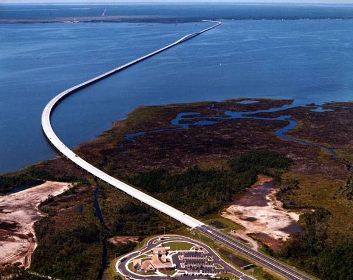
The Virginia Dare Memorial Bridge – over 5 miles long and opened in 2002.
In All Hallows-by-the-Tower, a maritime accident is commemorated.
Jesus summons drowned Sea Scouts out of the water …
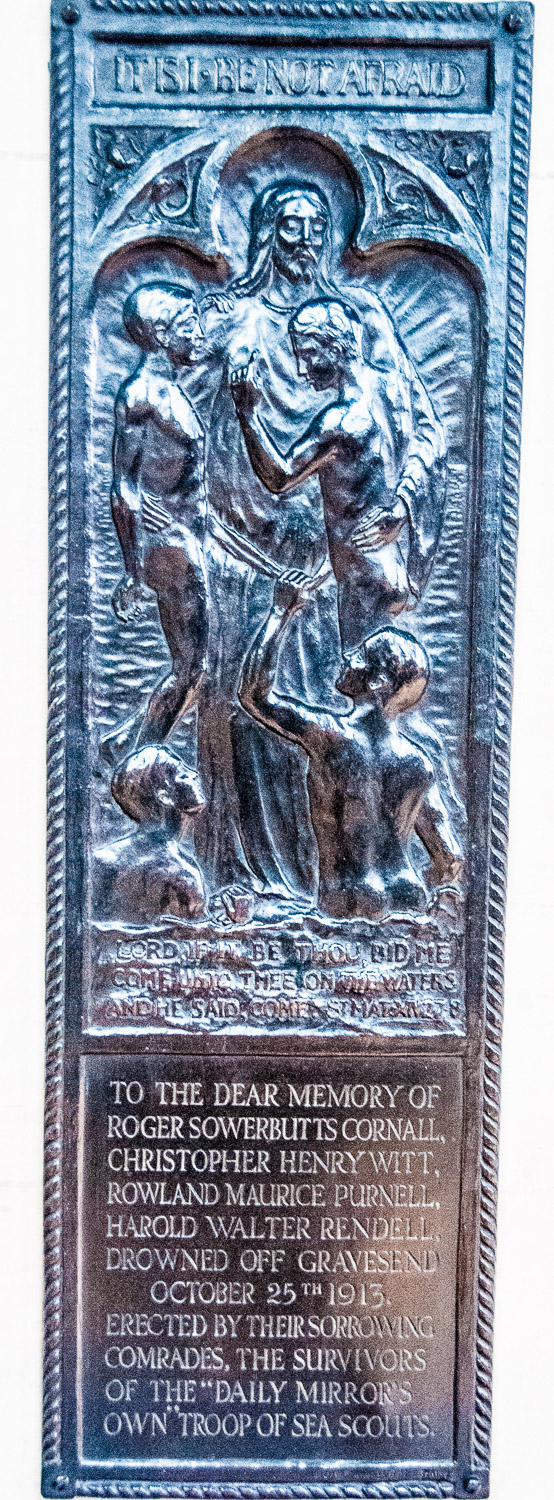
The inscription reads …
It is I, be not afraid.
Lord, if it be Thou, bid me come unto Thee on the waters.
And He said, ‘Come.’ St Matt. 14-27
Sea Scouting was a relatively new movement and in July 1912 the Daily Mirror newspaper presented them with a 50-ton Ketch, named the Mirror, equipped with the latest wireless equipment.
The evening of Saturday, October 25th, was a fine clear night and most of the Scouts turned in. The Mirror was tacking across the Thames between Gravesend and Tilbury having passed two steamers when a third, the Hogarth, loomed up, close to. Hogarth appeared to be making a turn to pass behind the Mirror, but crashed into her amidships sinking her.
For some time the yacht hung on the stem of the steamer and some boys managed to get up onto her. Ropes were thrown and four or five more were saved. Hogarth’s boat was promptly lowered and picked up three more boys from the water but four perished.
I found it difficult not to be reminded of the Marchioness disaster in 1989 – the commemorative plaque for those victims is in Southwark Cathedral …

Finally, in Postman’s Park, behind St Botolph’s Aldersgate, can be found the Memorial to Heroic Self Sacrifice. The ceramic tablets (and there are 54 of them) were the idea of the Victorian artist Georg Frederic Watts and I shall be writing more about him and this memorial in a future blog.
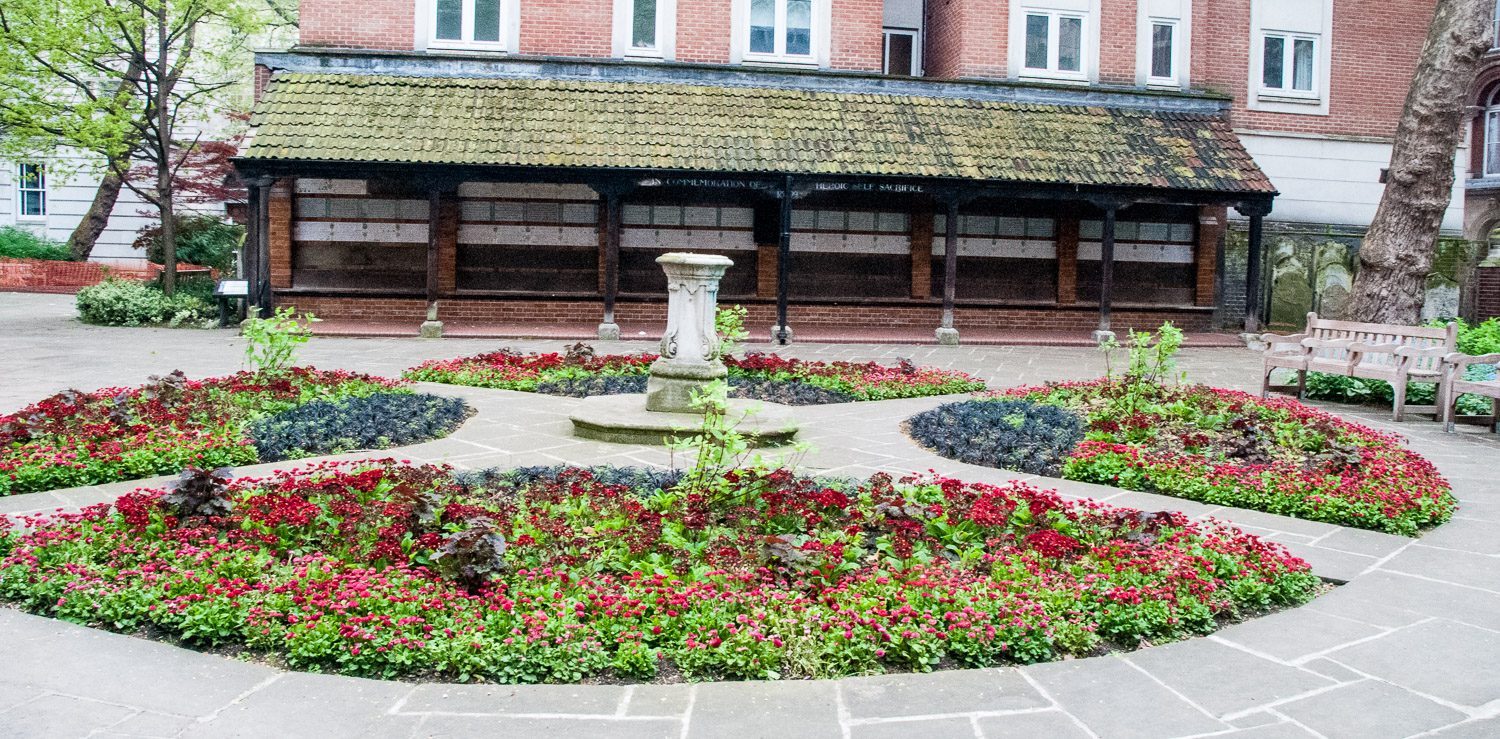
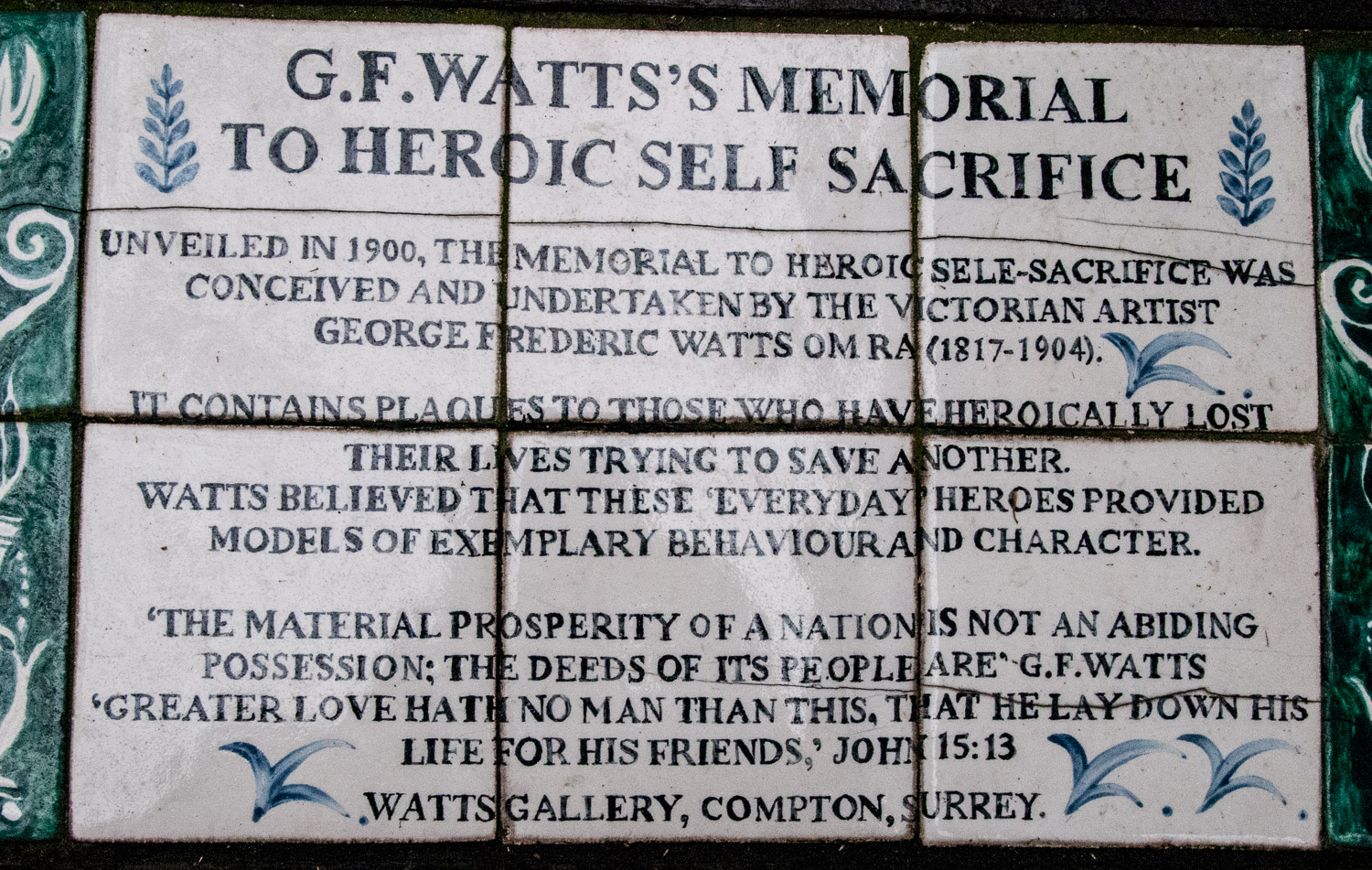
In the meantime, it is interesting to see the tablets illustrate some of the dangerous features of the times.
These were days before consumer protection legislation when it came to product safety …
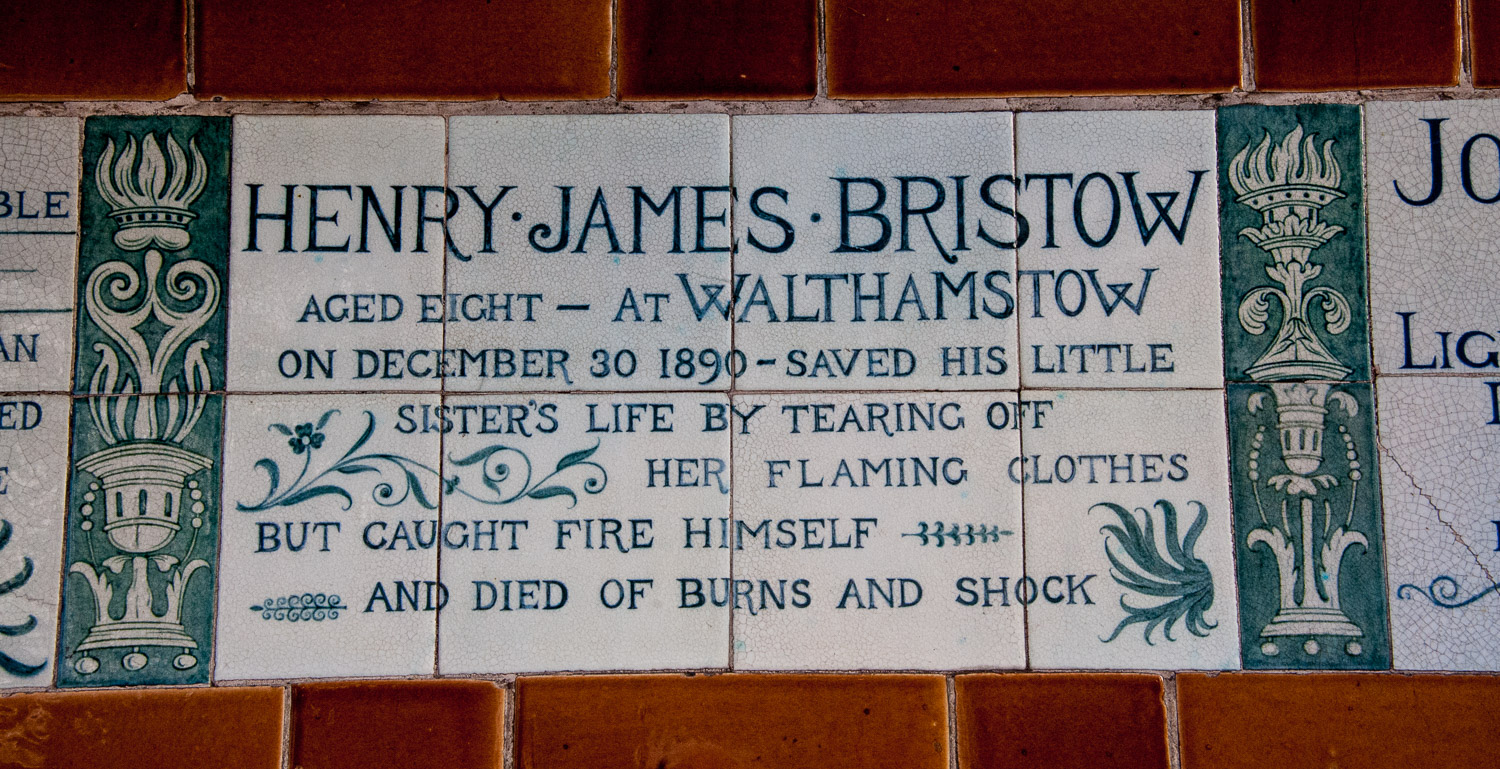
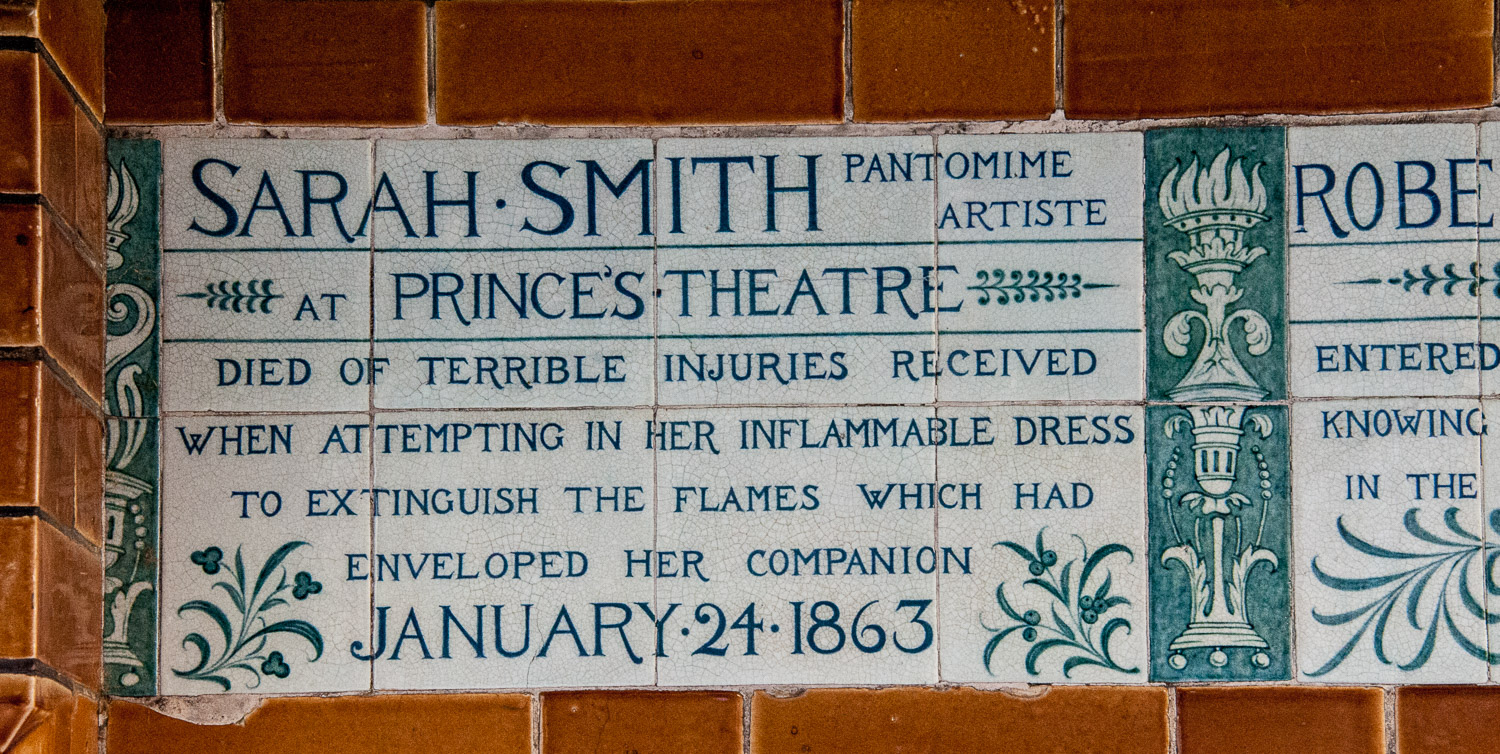
The dangers associated with a horse transport era are apparent …
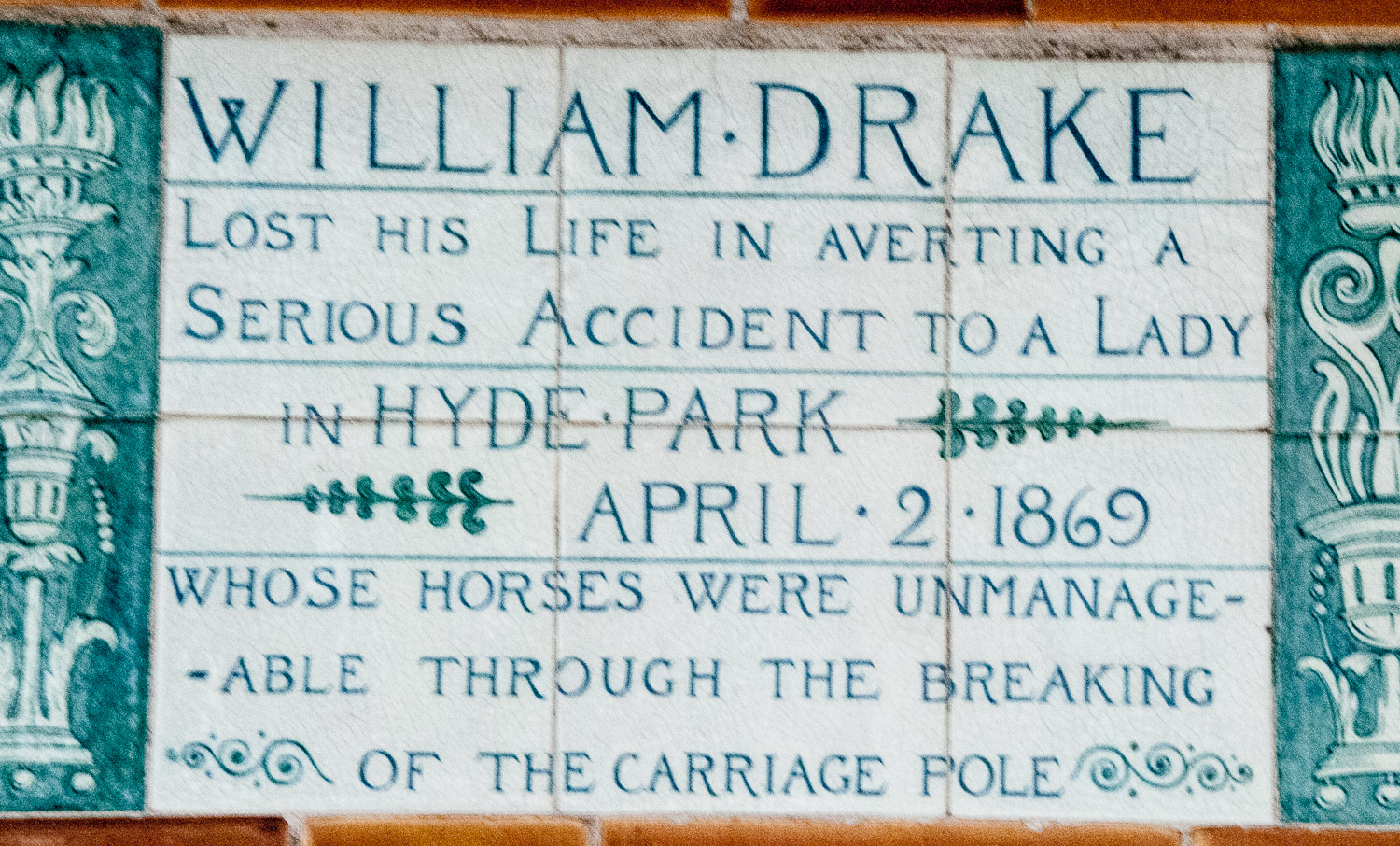
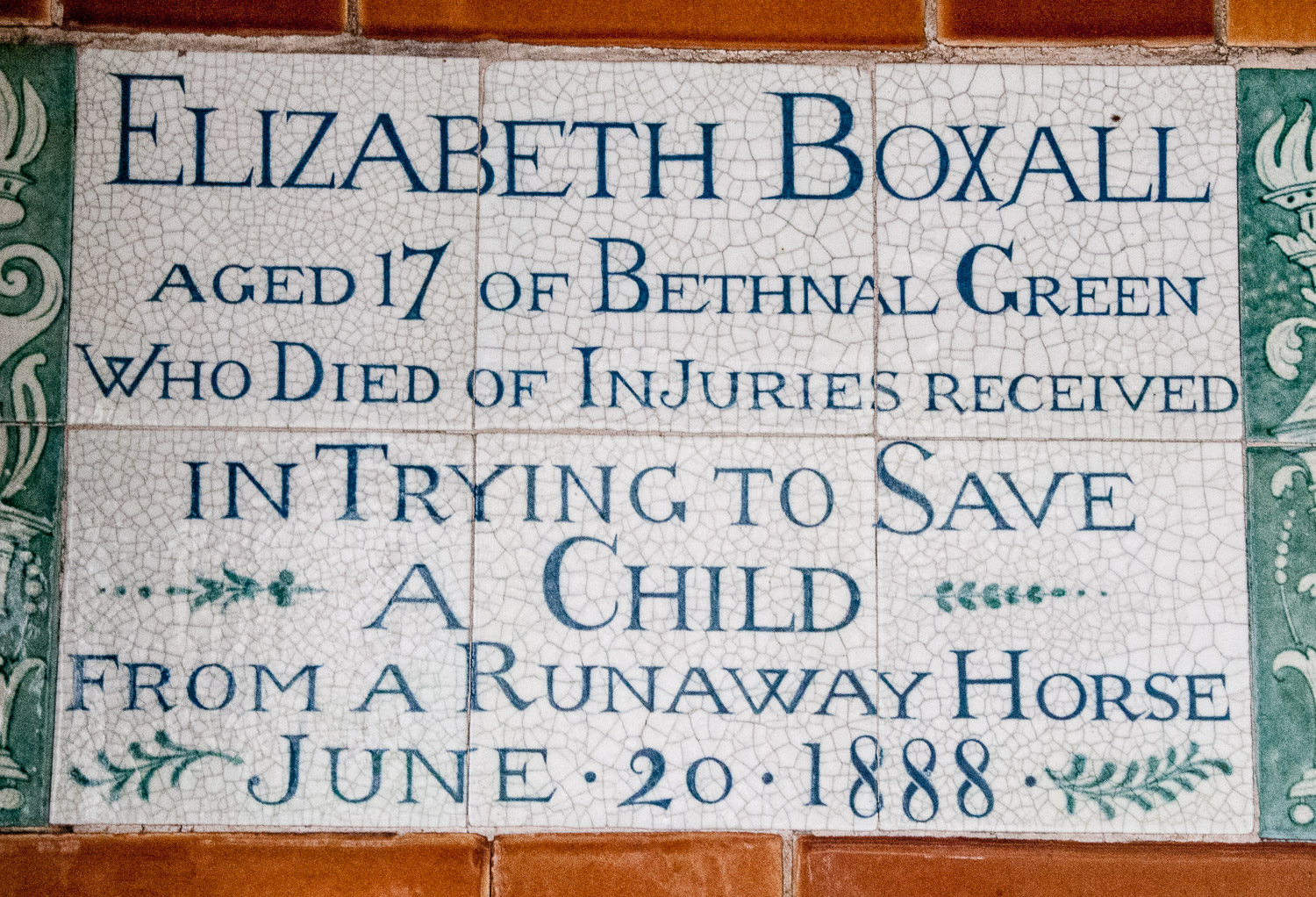
Industrial accidents were commonplace …
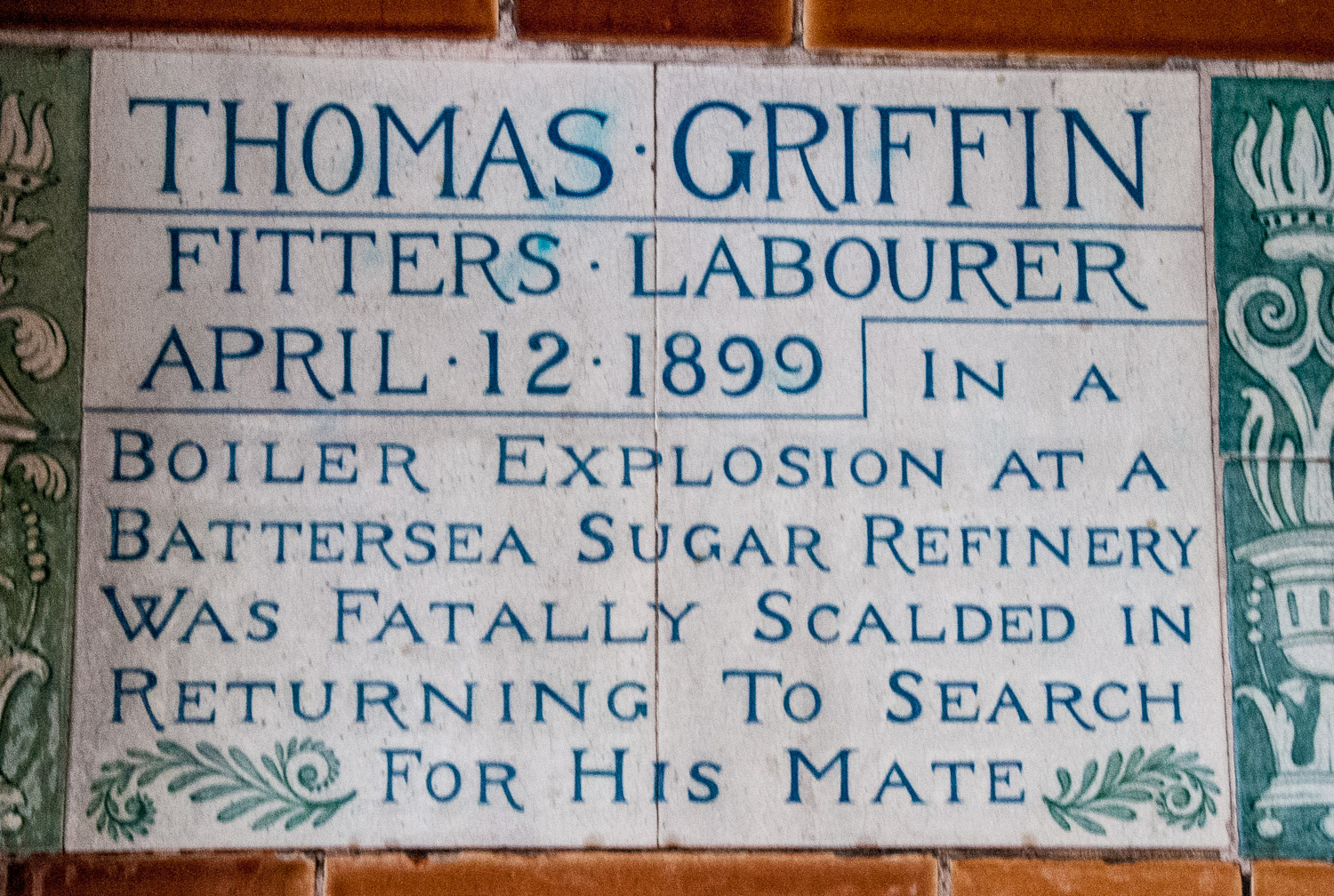
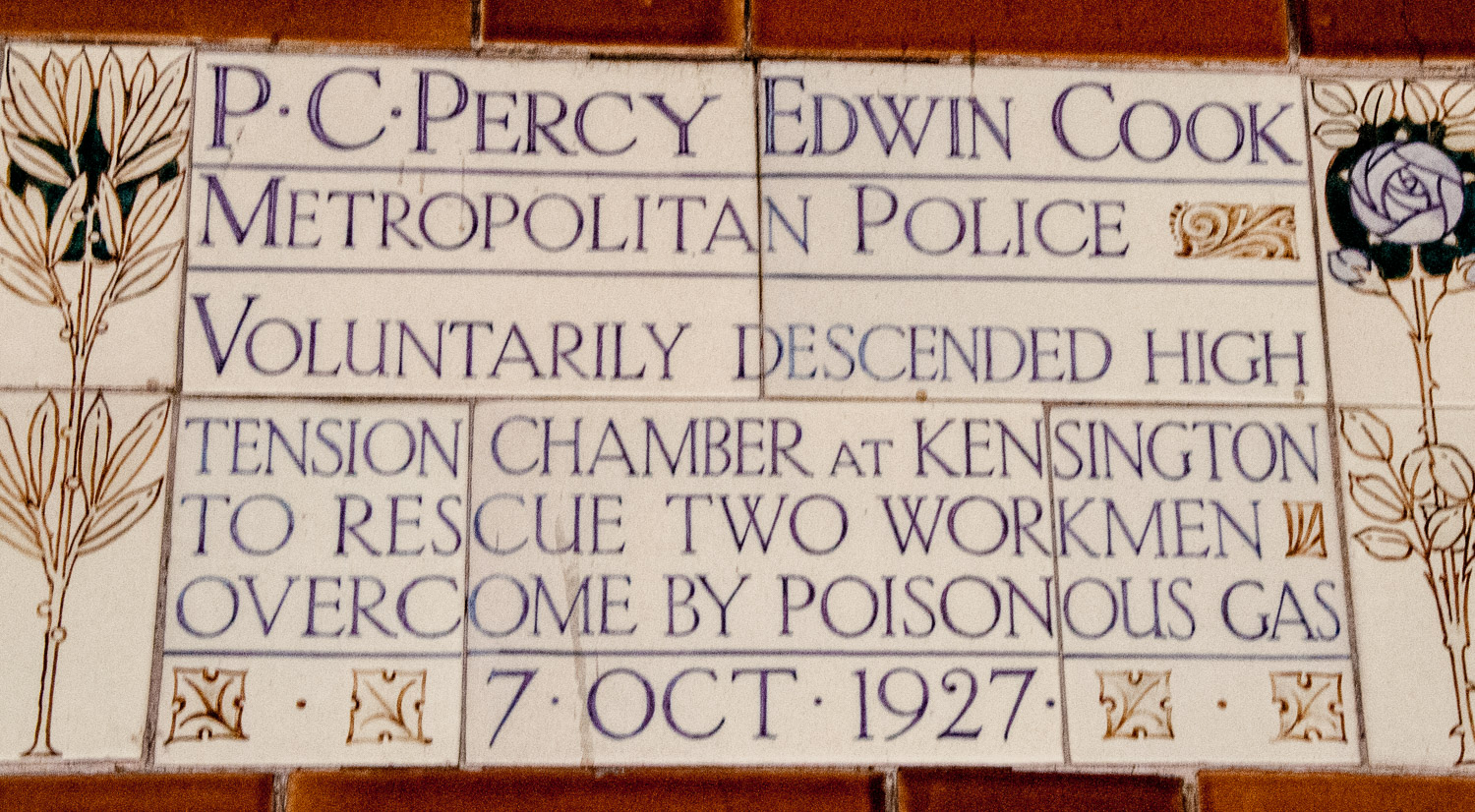
The highly contagious nature of diptheria put doctors’ lives in danger during treatment …
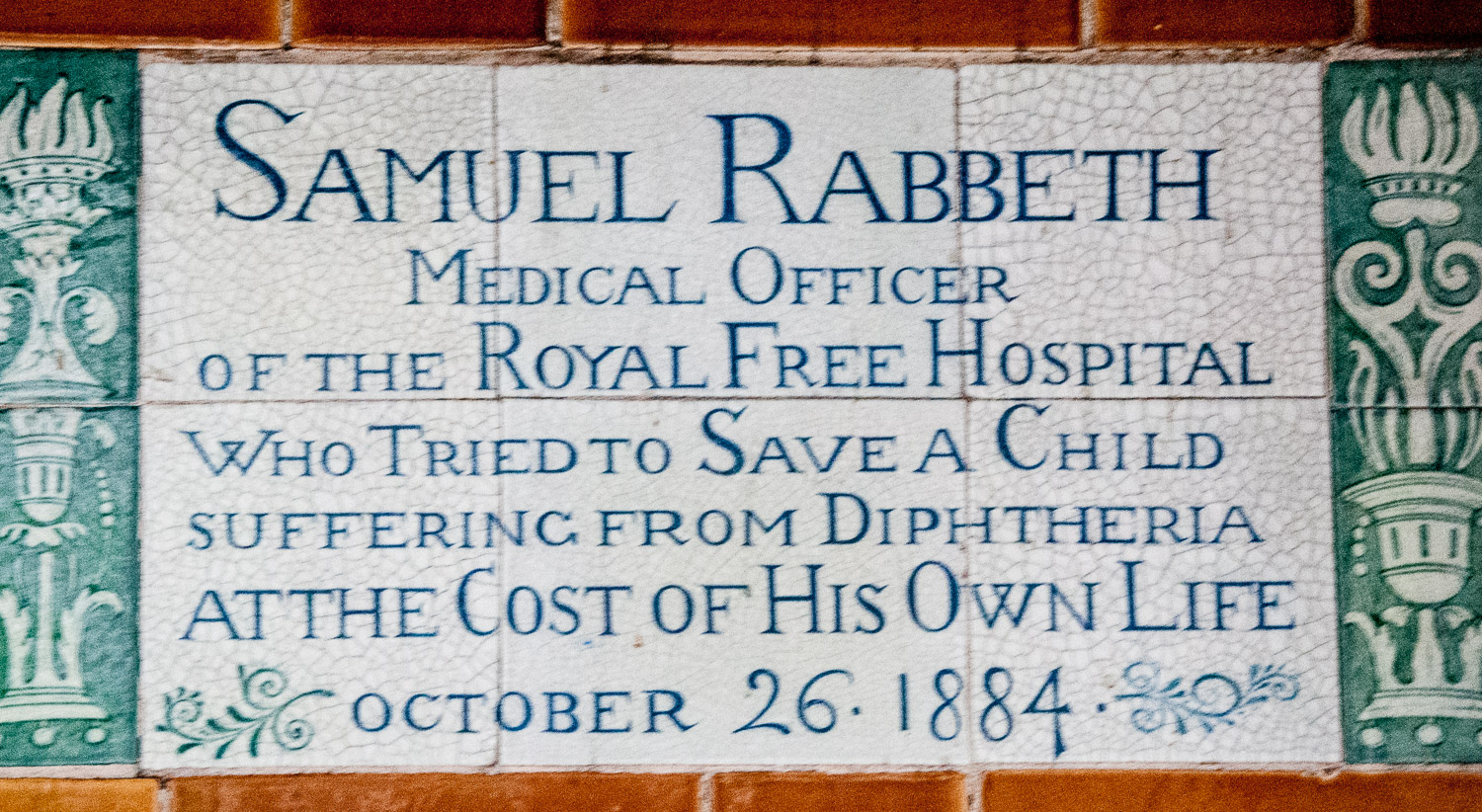
The historian John Price has researched the lives of the people commemorated on the memorial and in a future blog I will be drawing on his work. He has published an excellent book on the subject which I recommend highly if you want to read more – Heroes of Postman’s Park by John Price – ISBN 978-0-7509-5643-7.
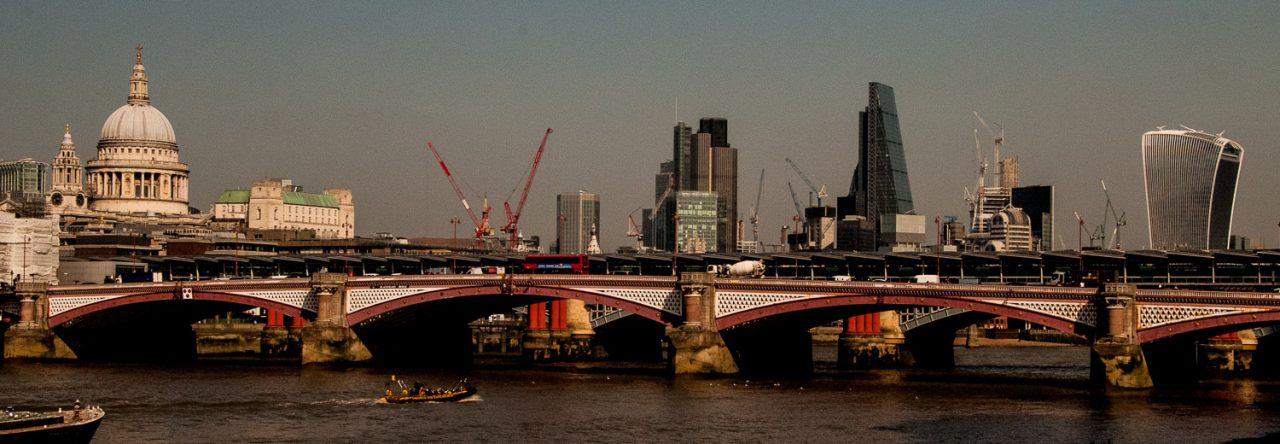
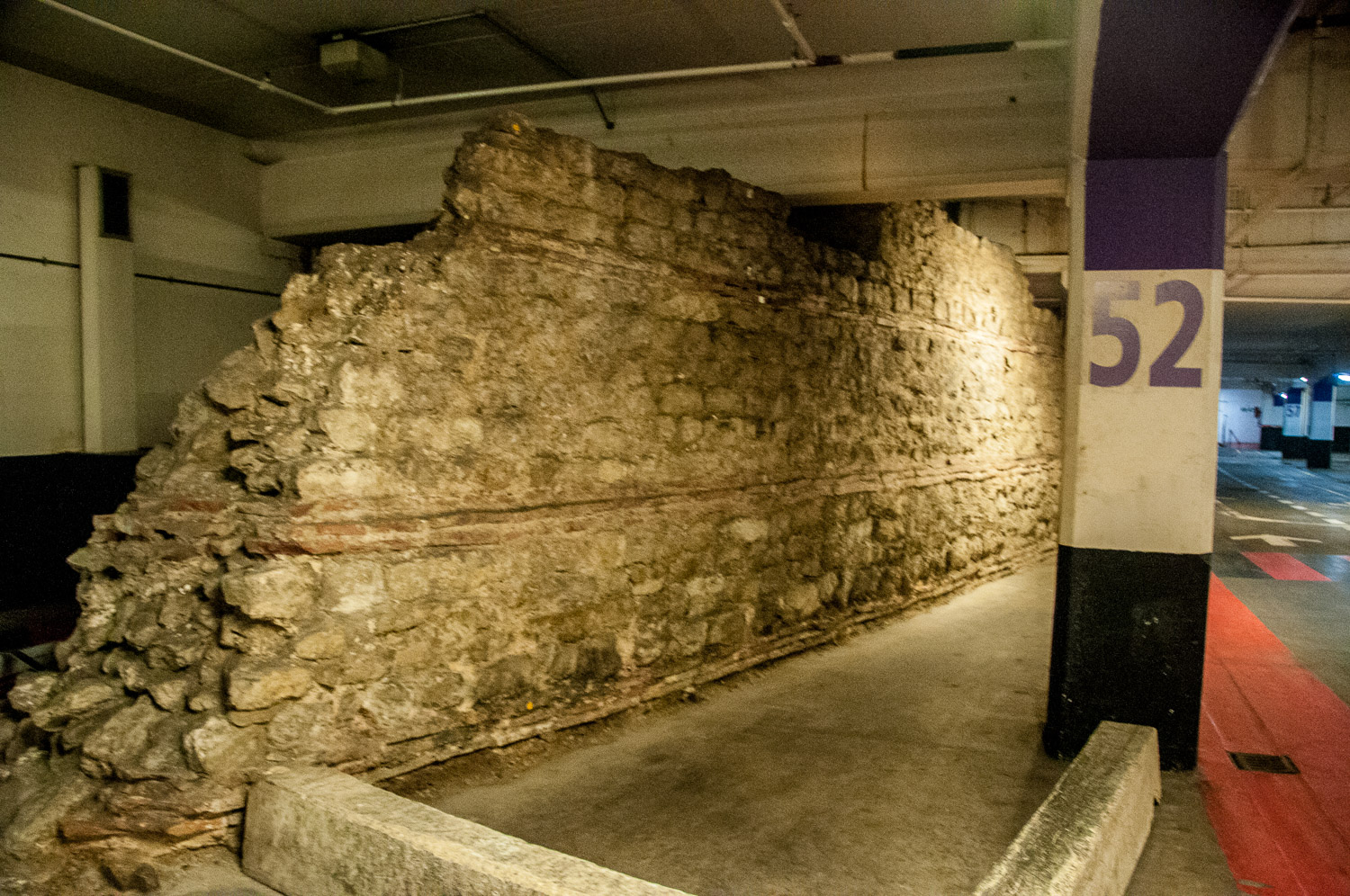
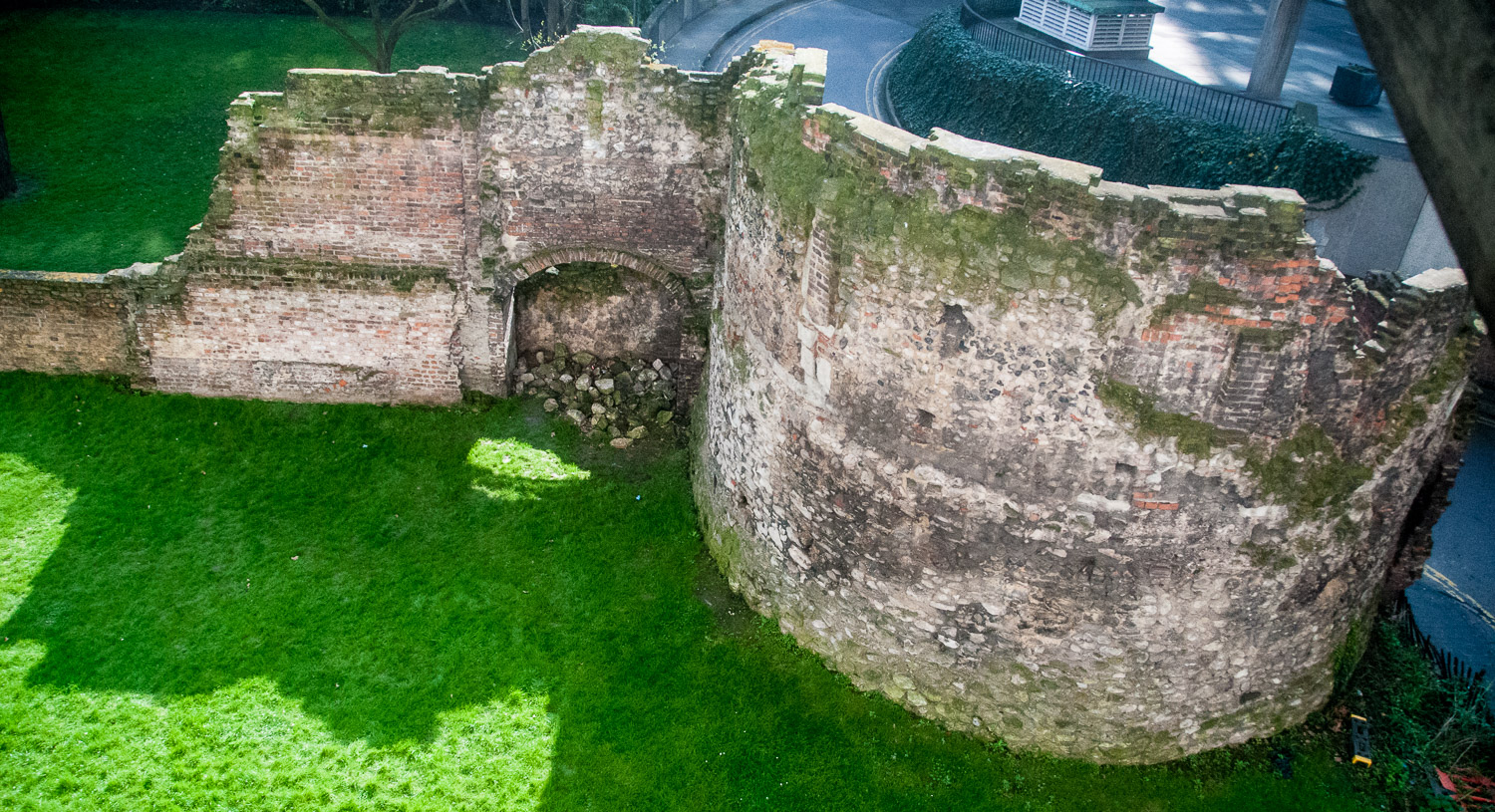
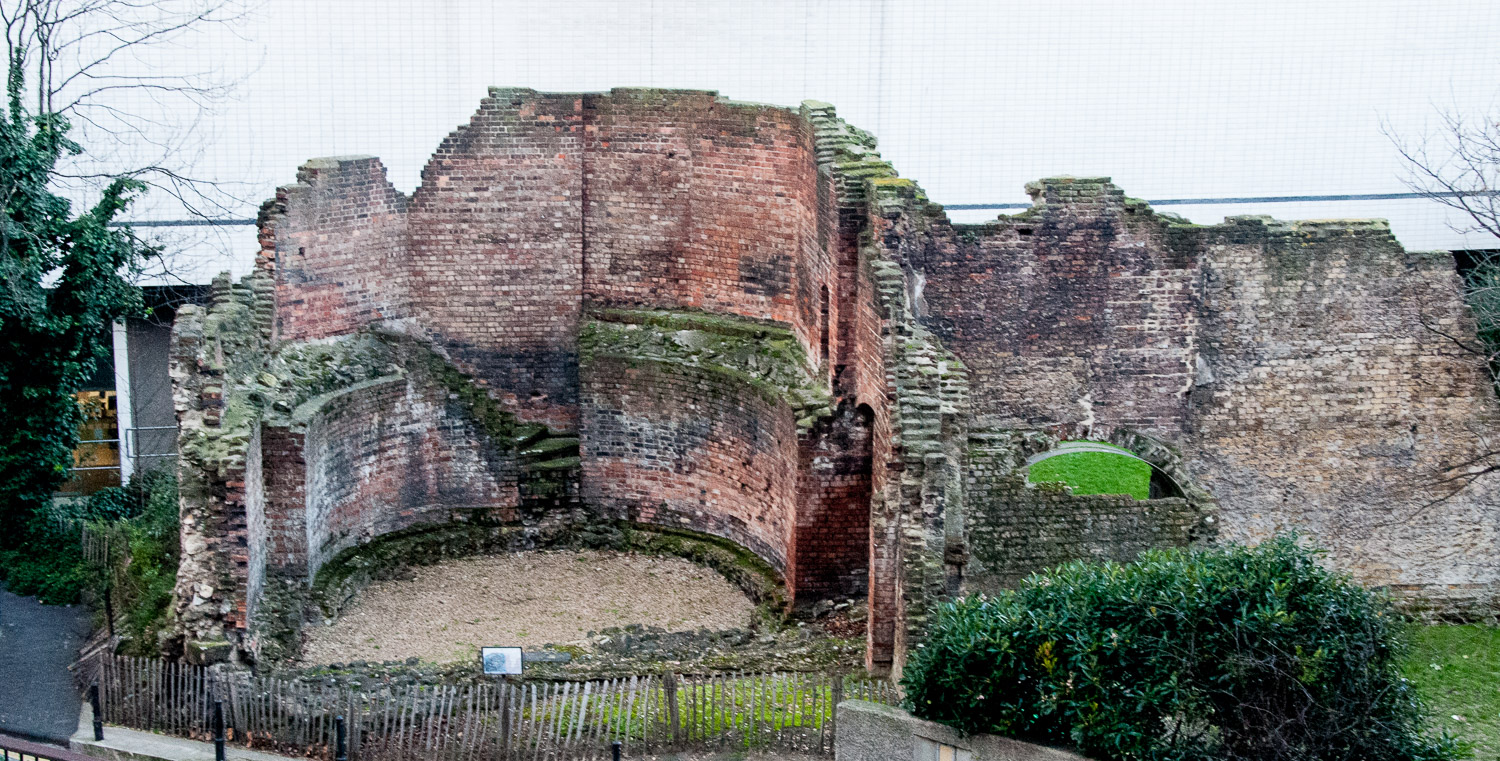
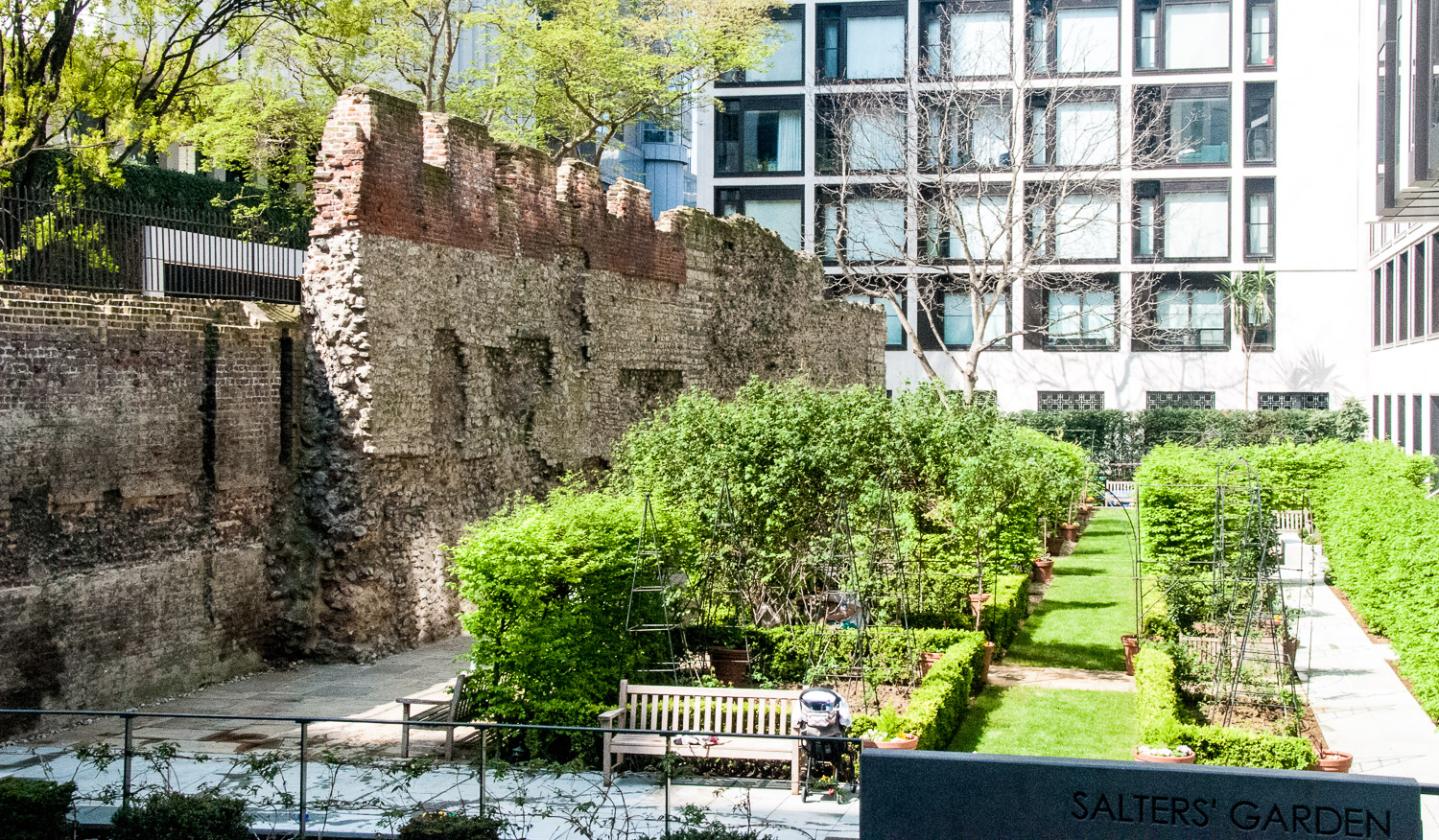
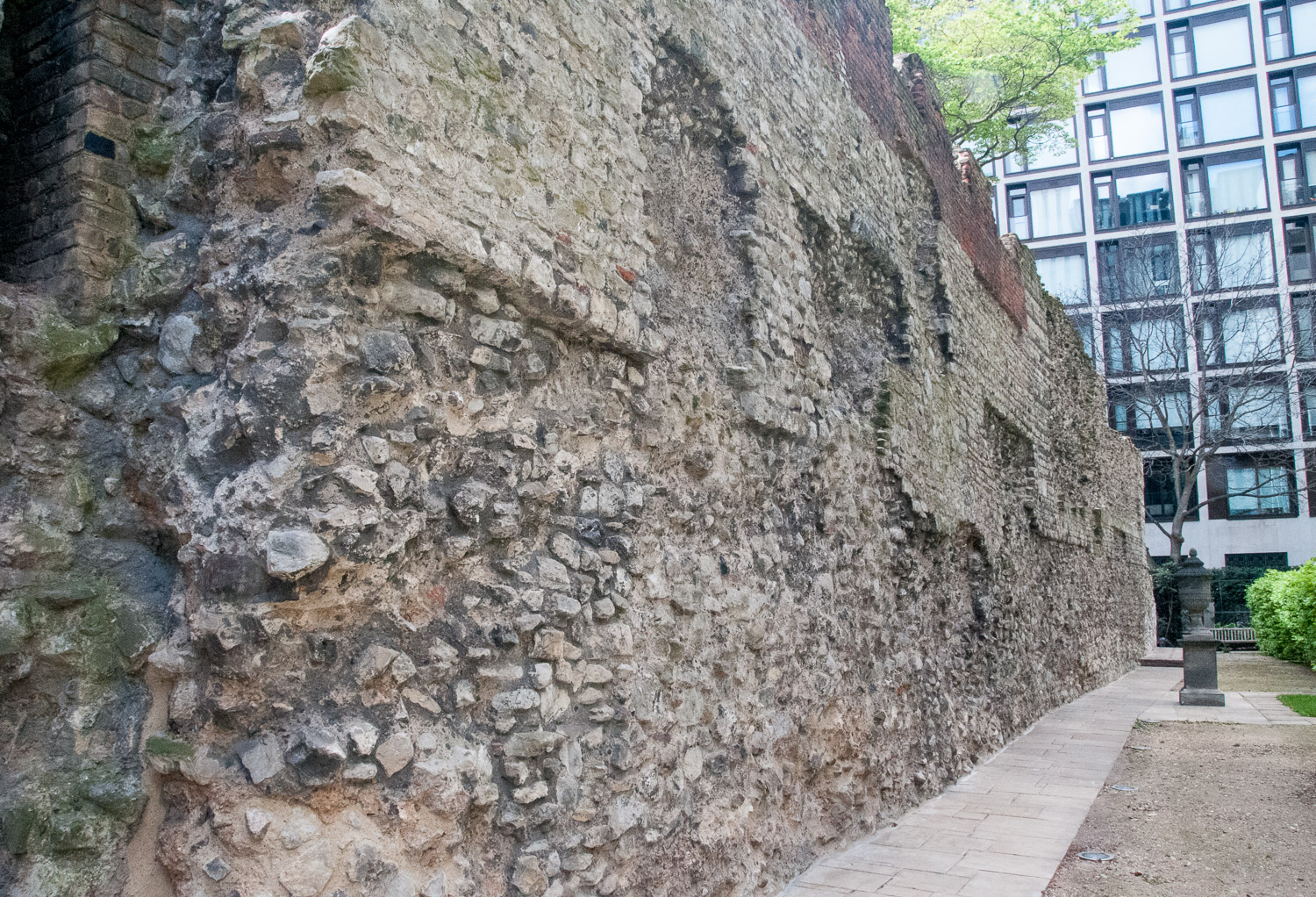 There is a new public space overlooking the garden which also accommodates the Minotaur who used to be a little isolated on the Highwalk …
There is a new public space overlooking the garden which also accommodates the Minotaur who used to be a little isolated on the Highwalk …